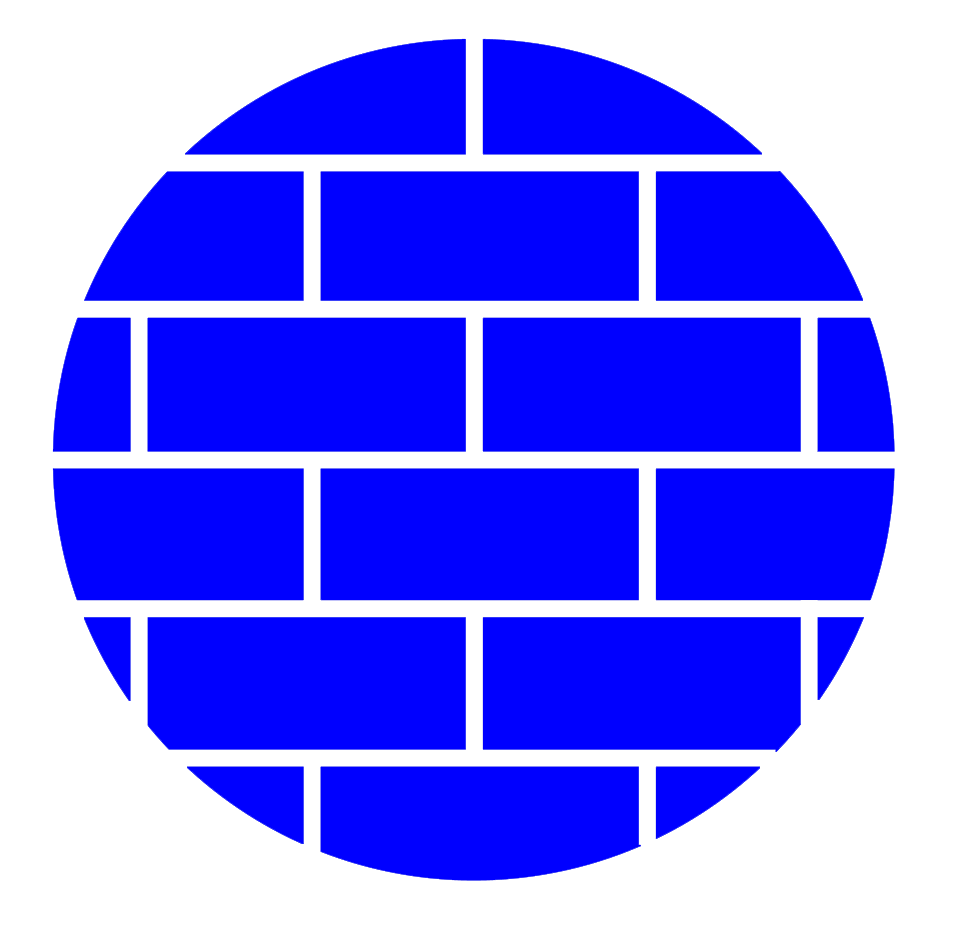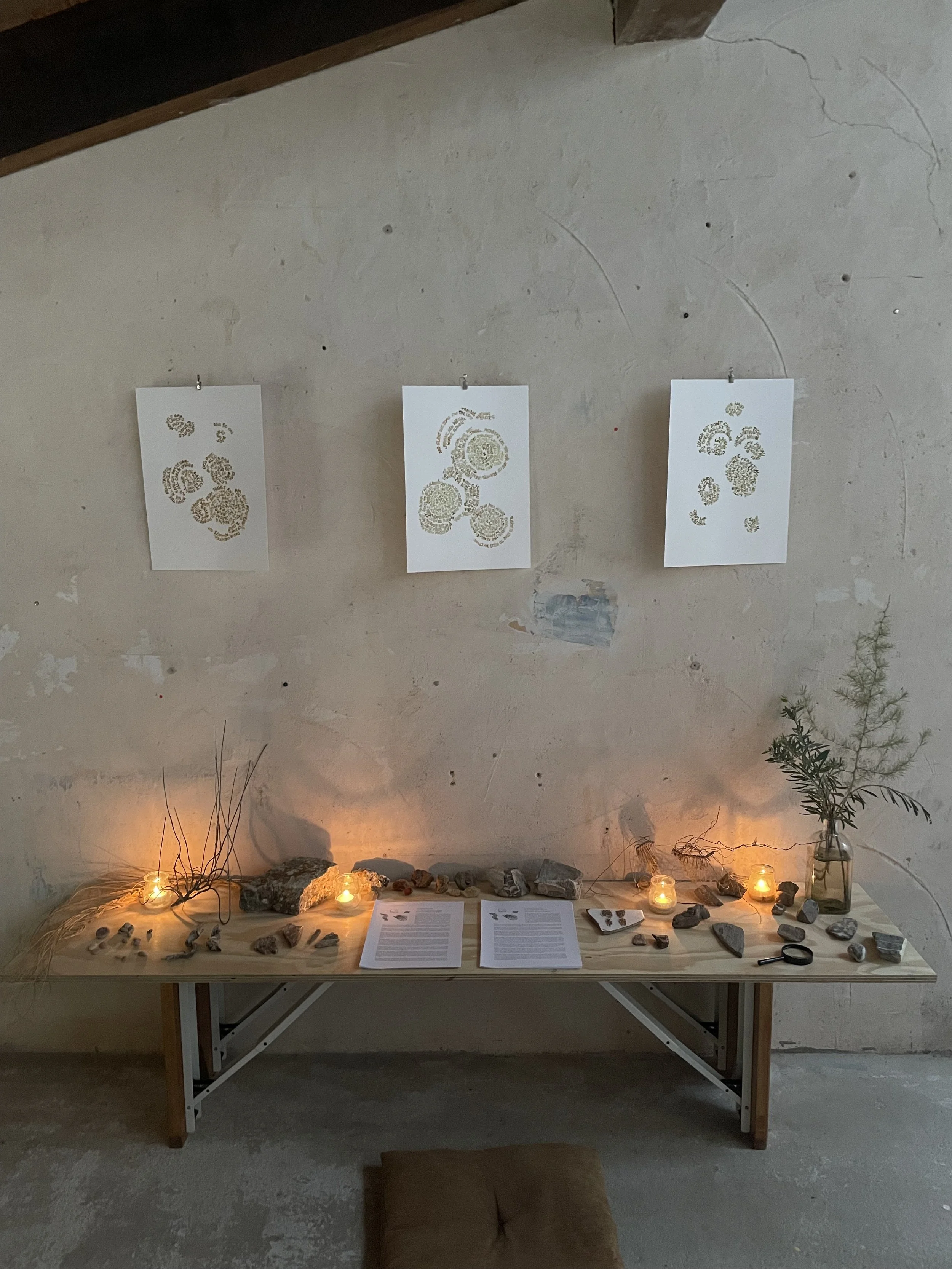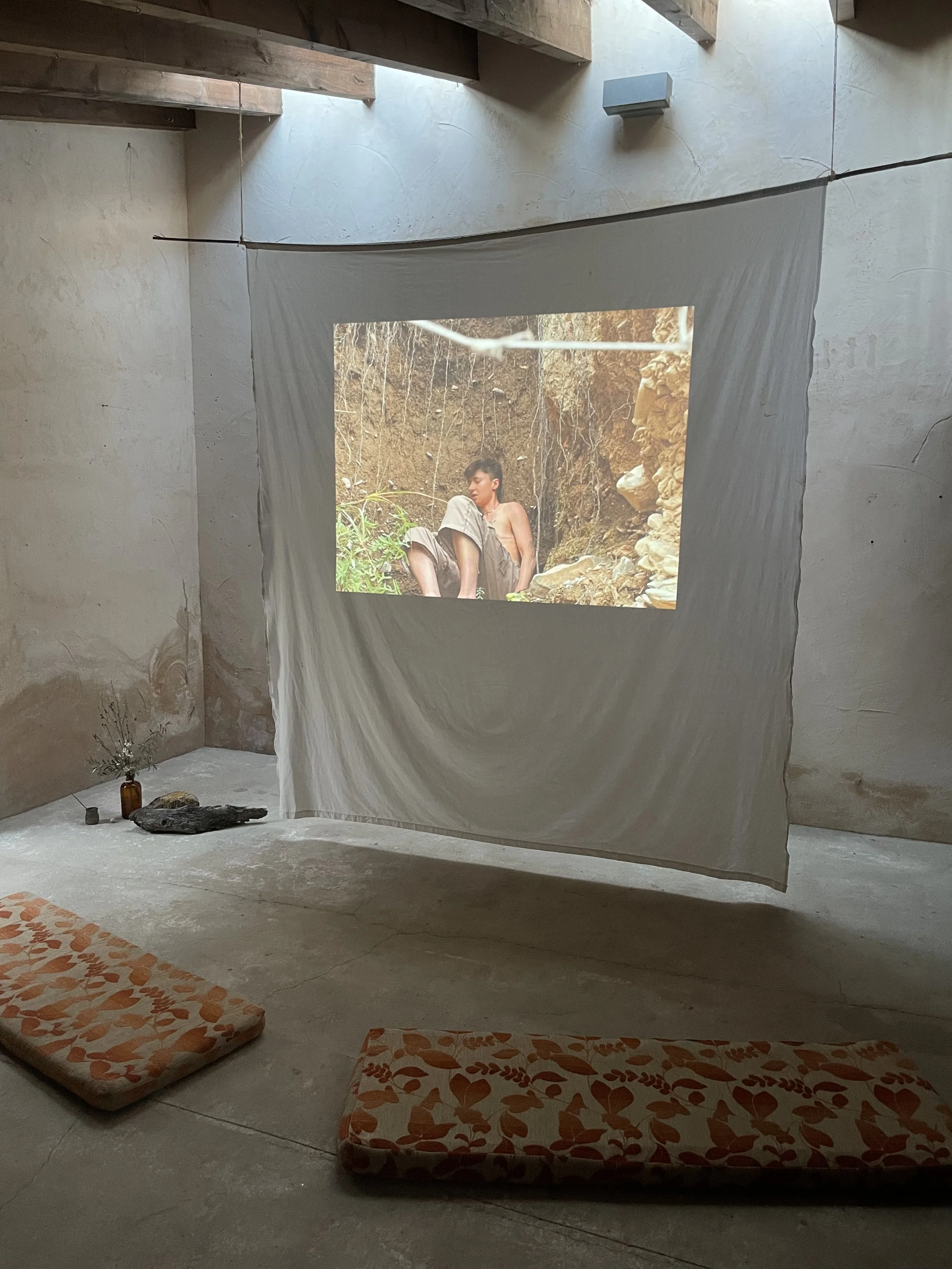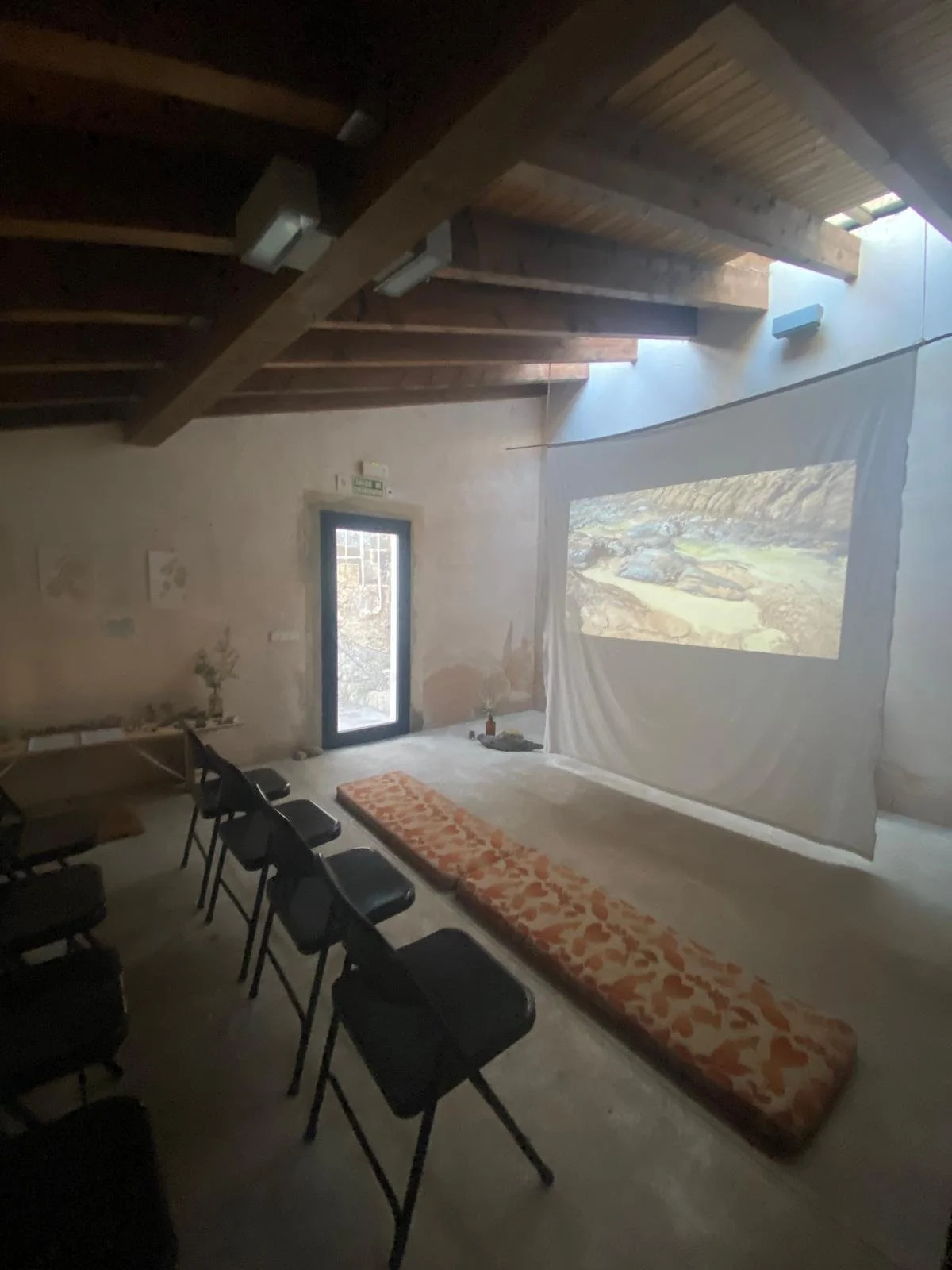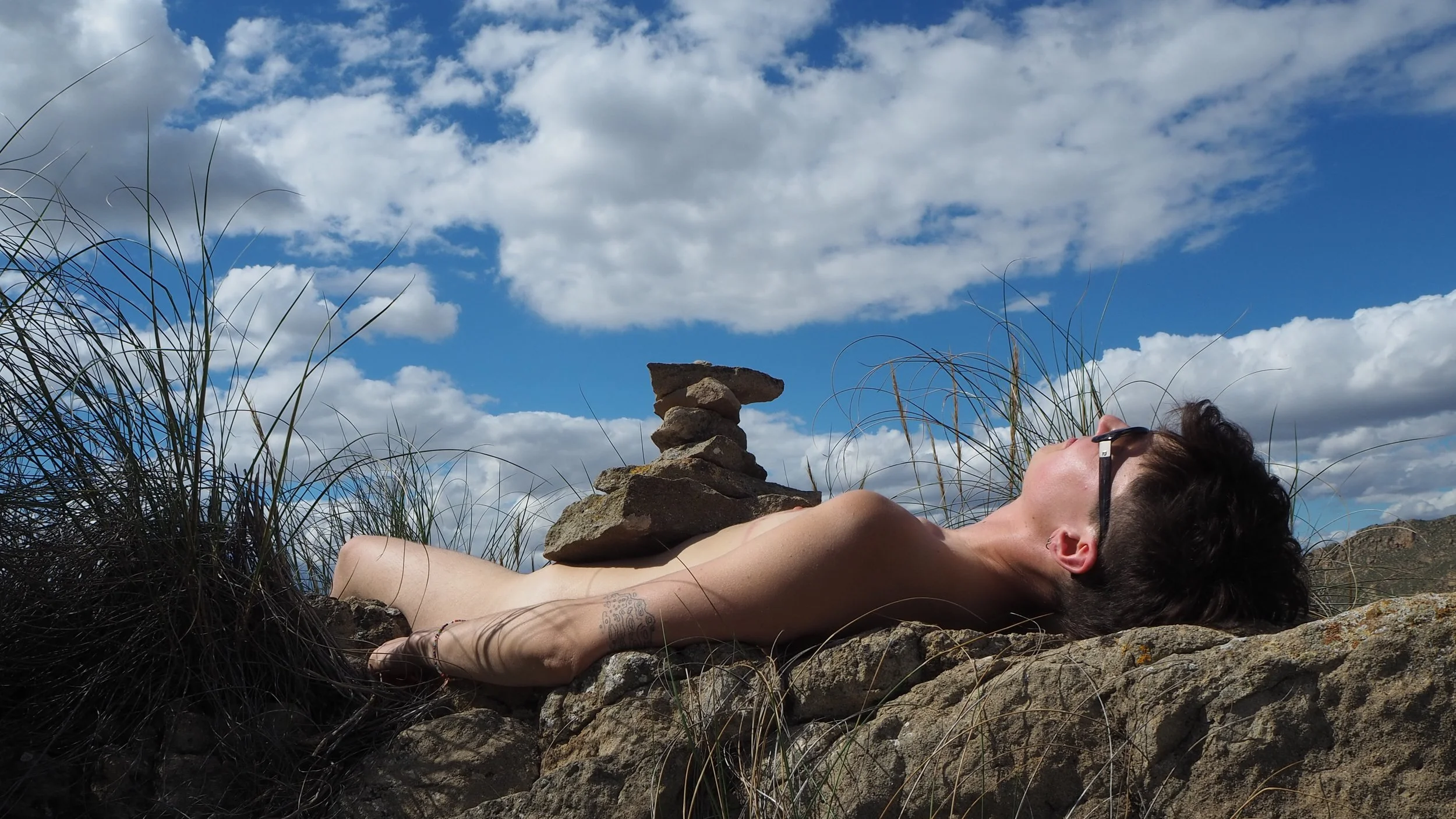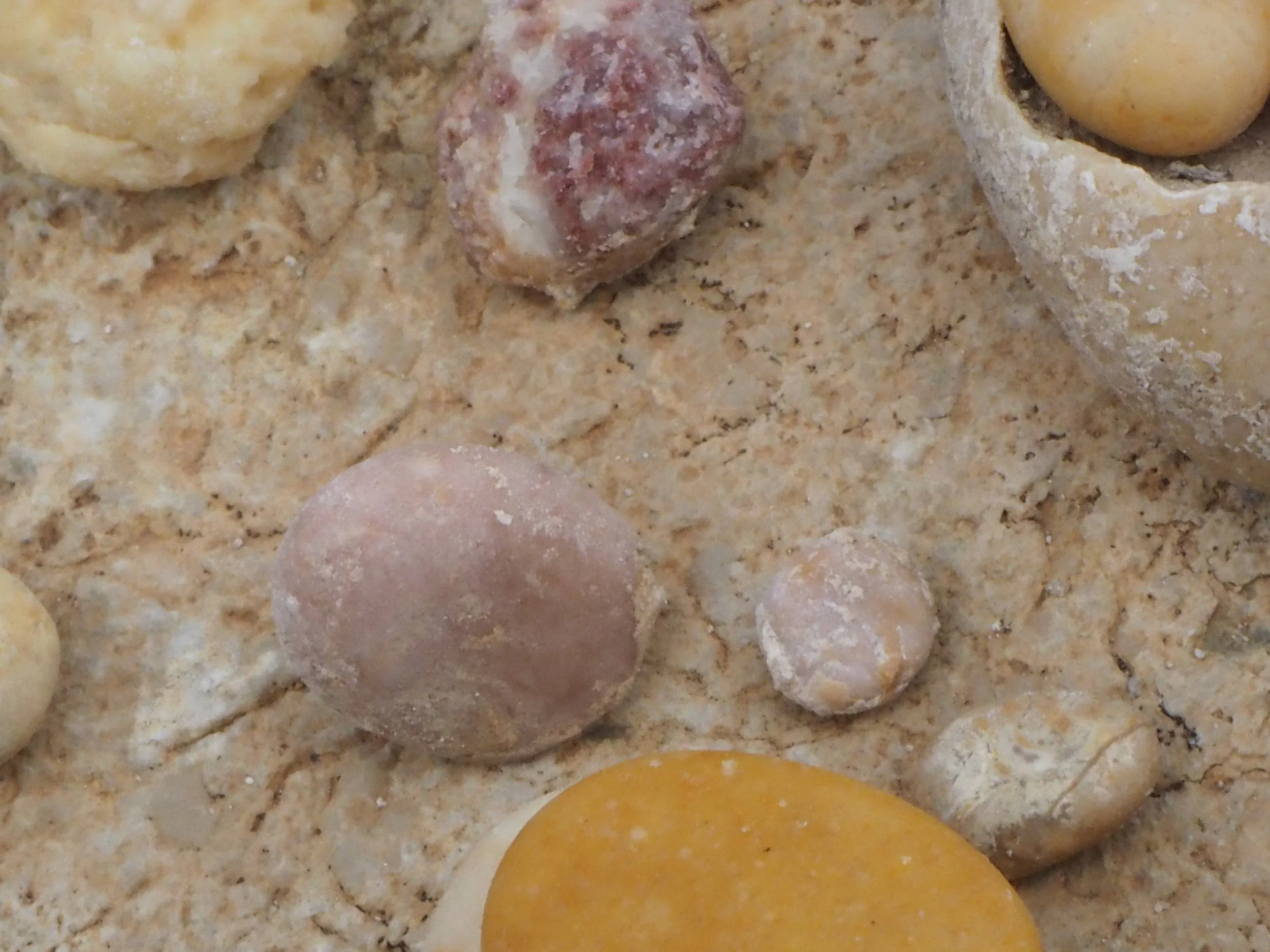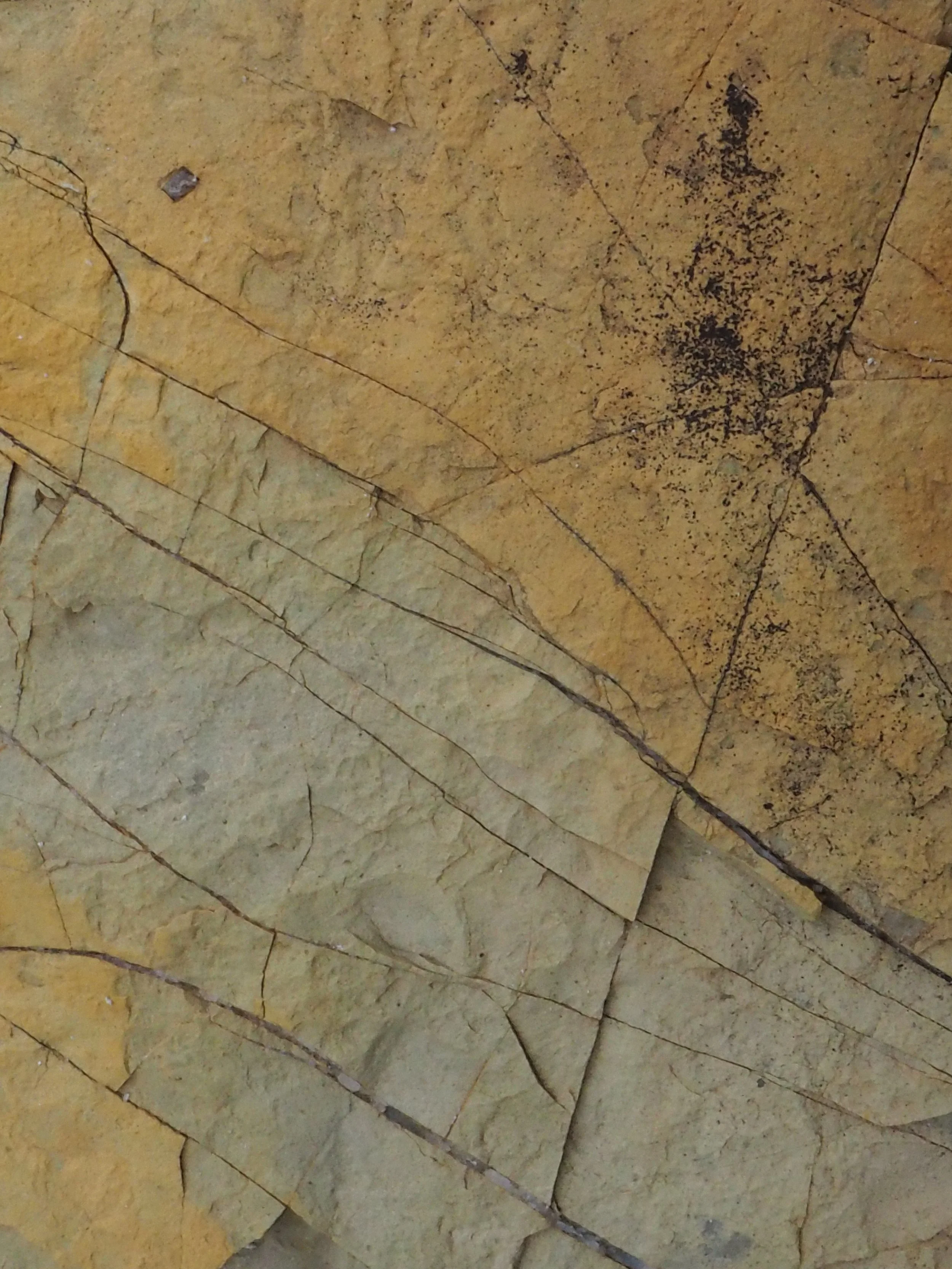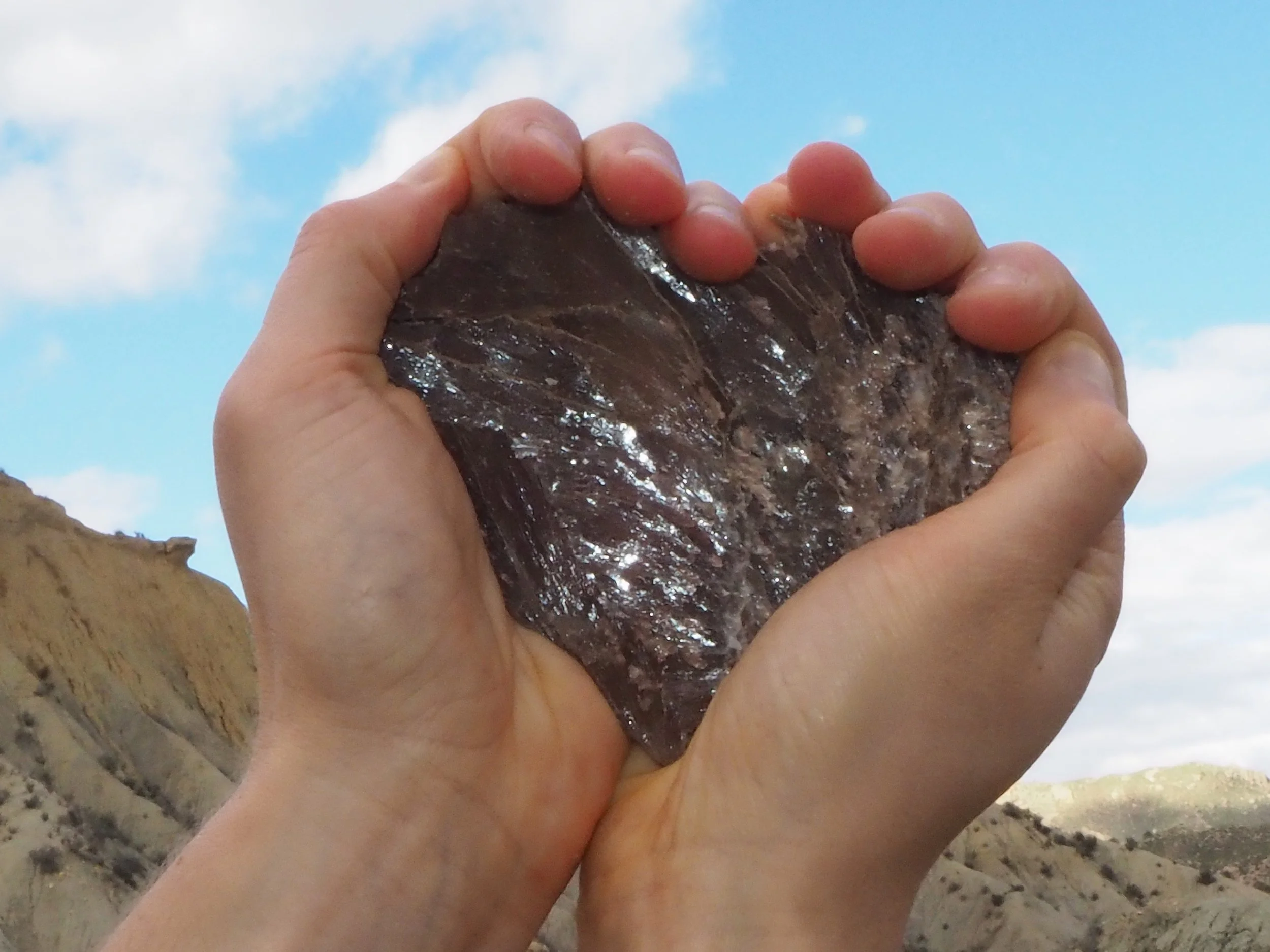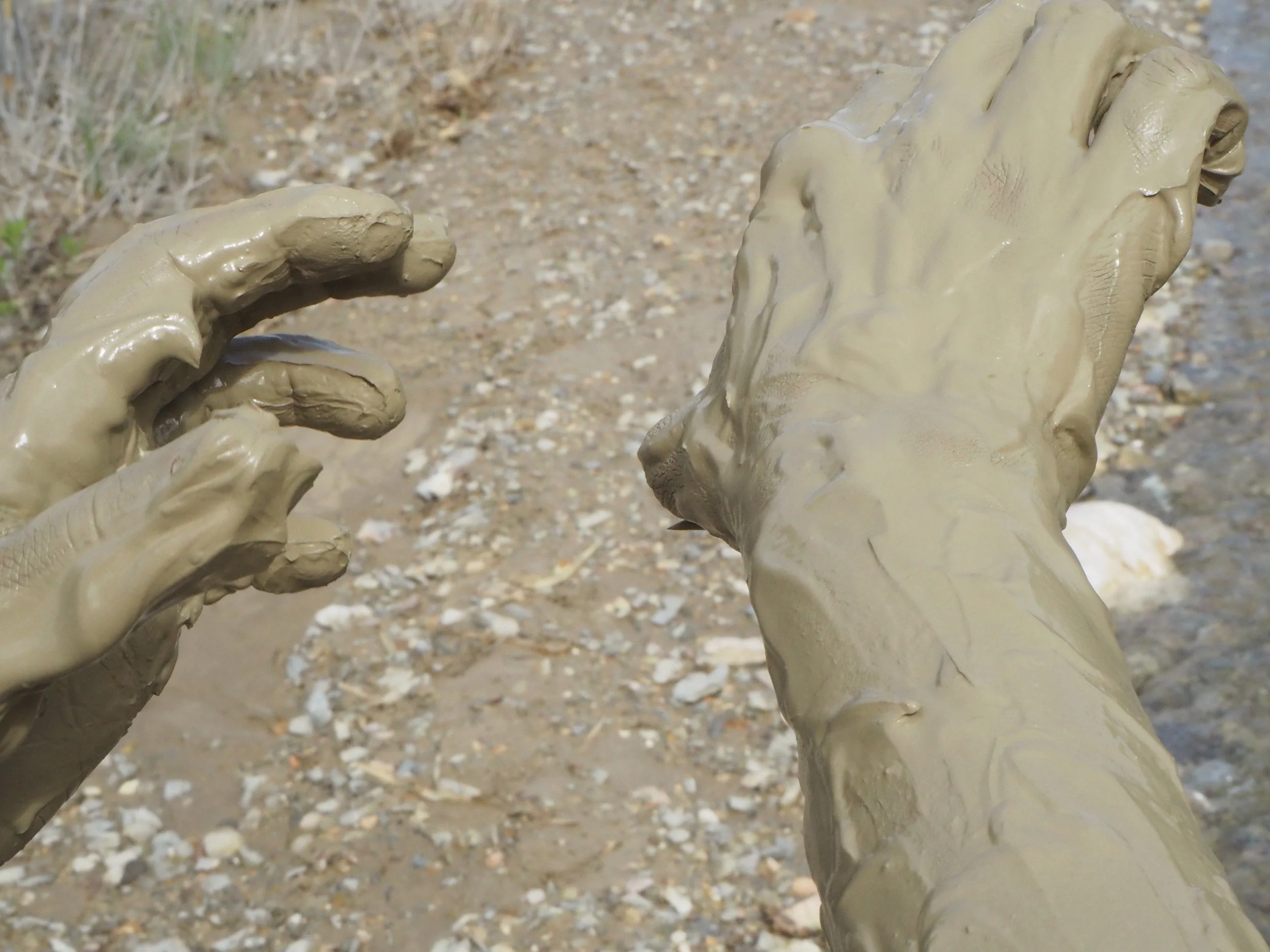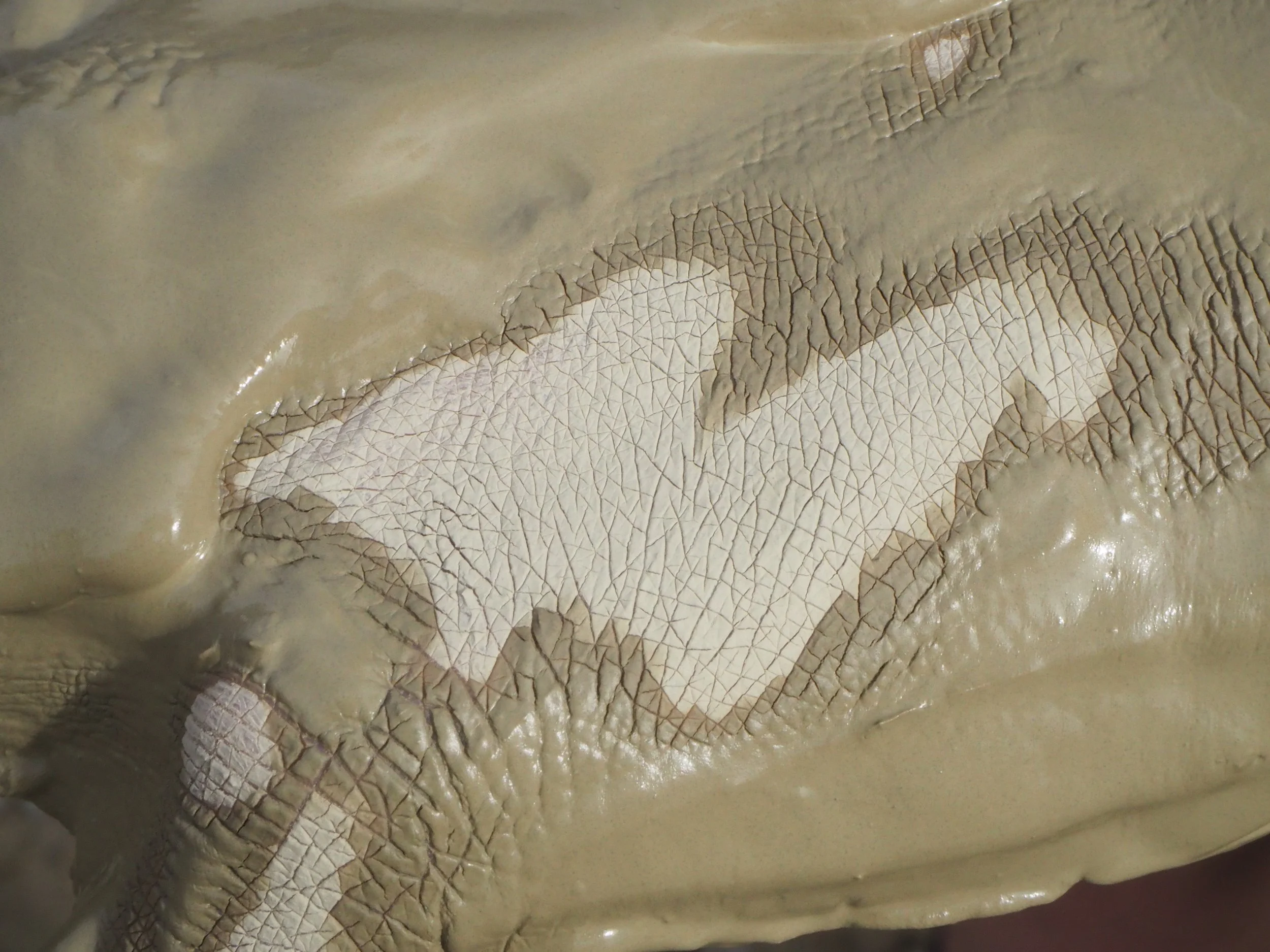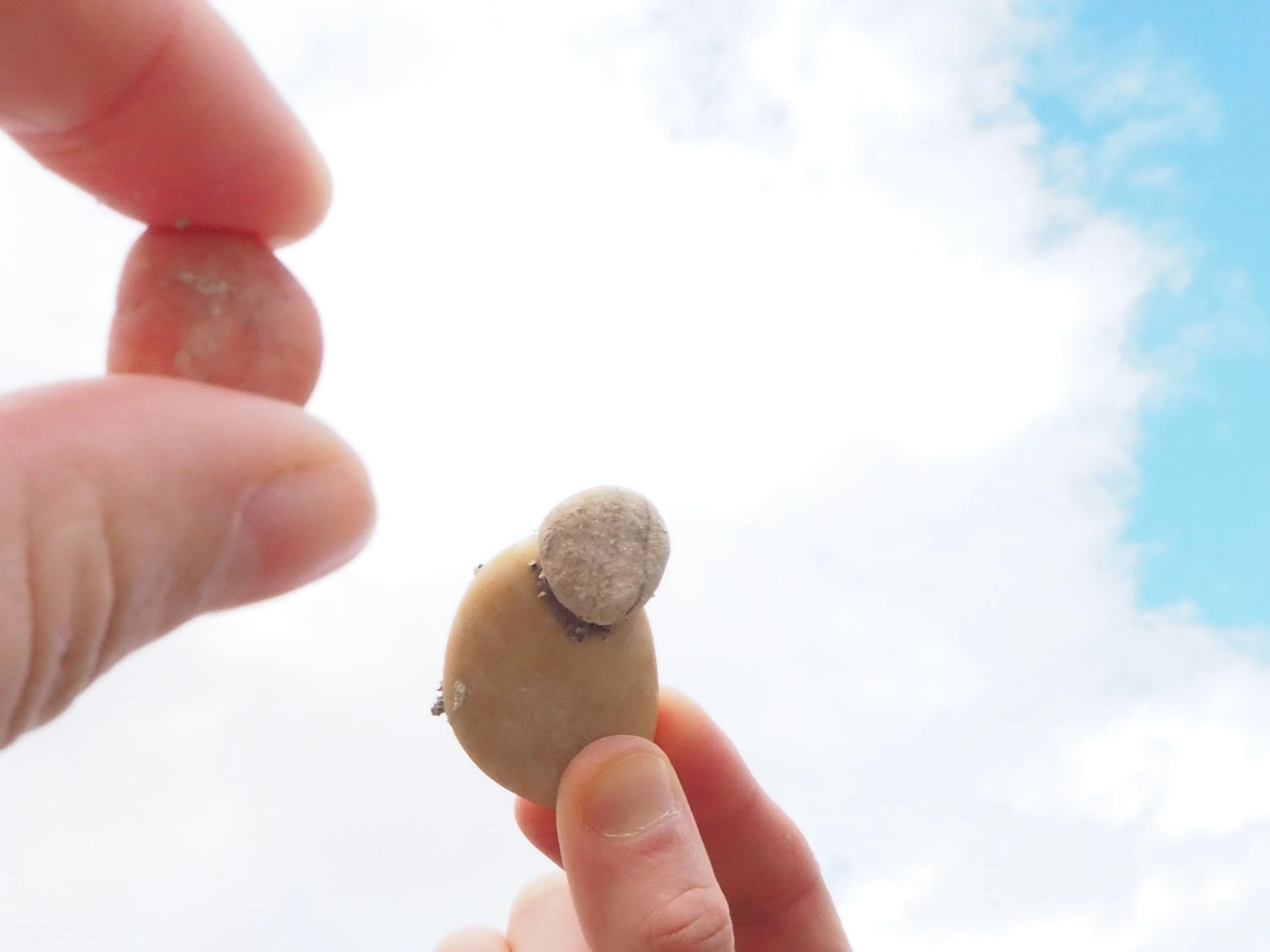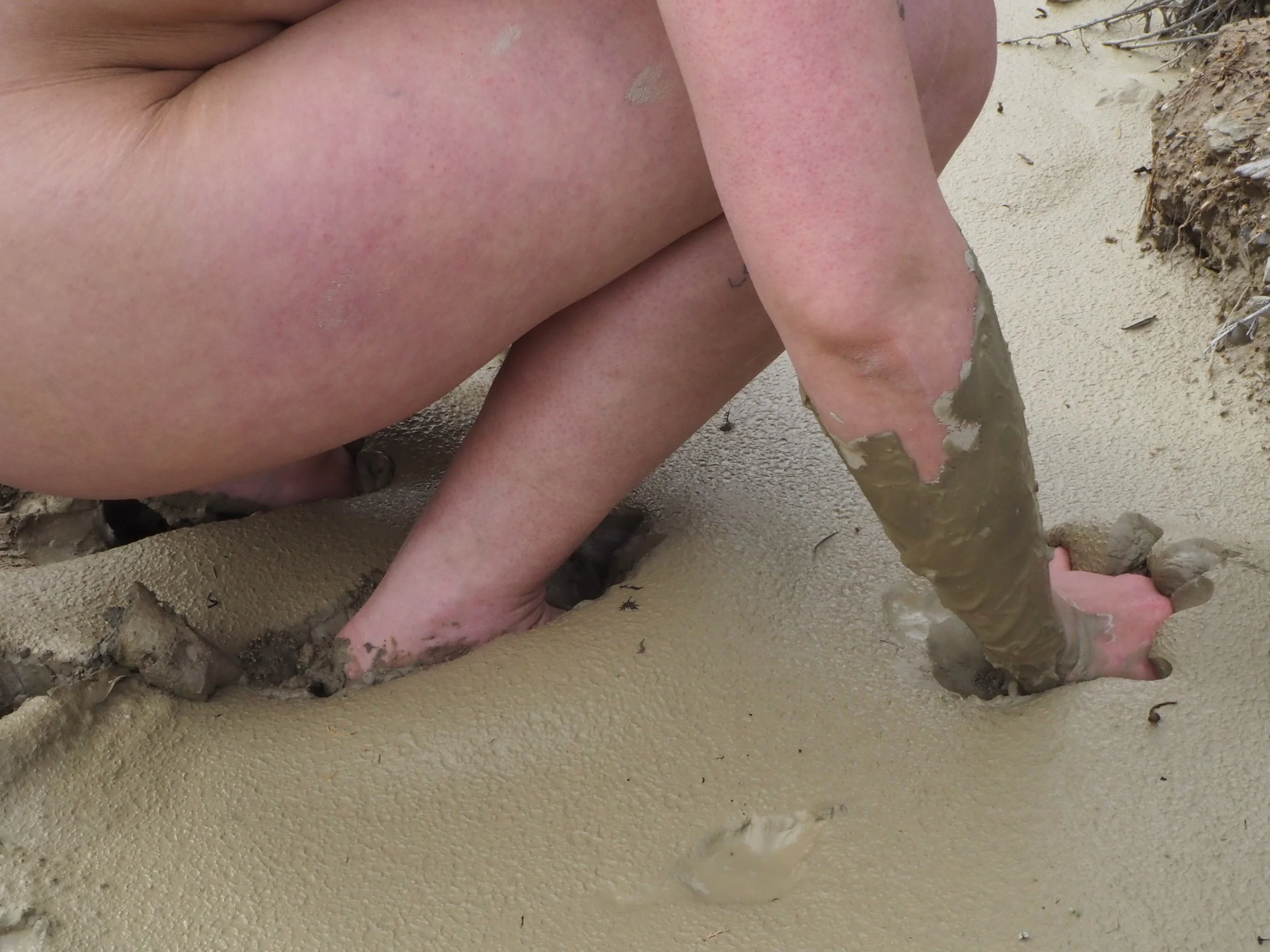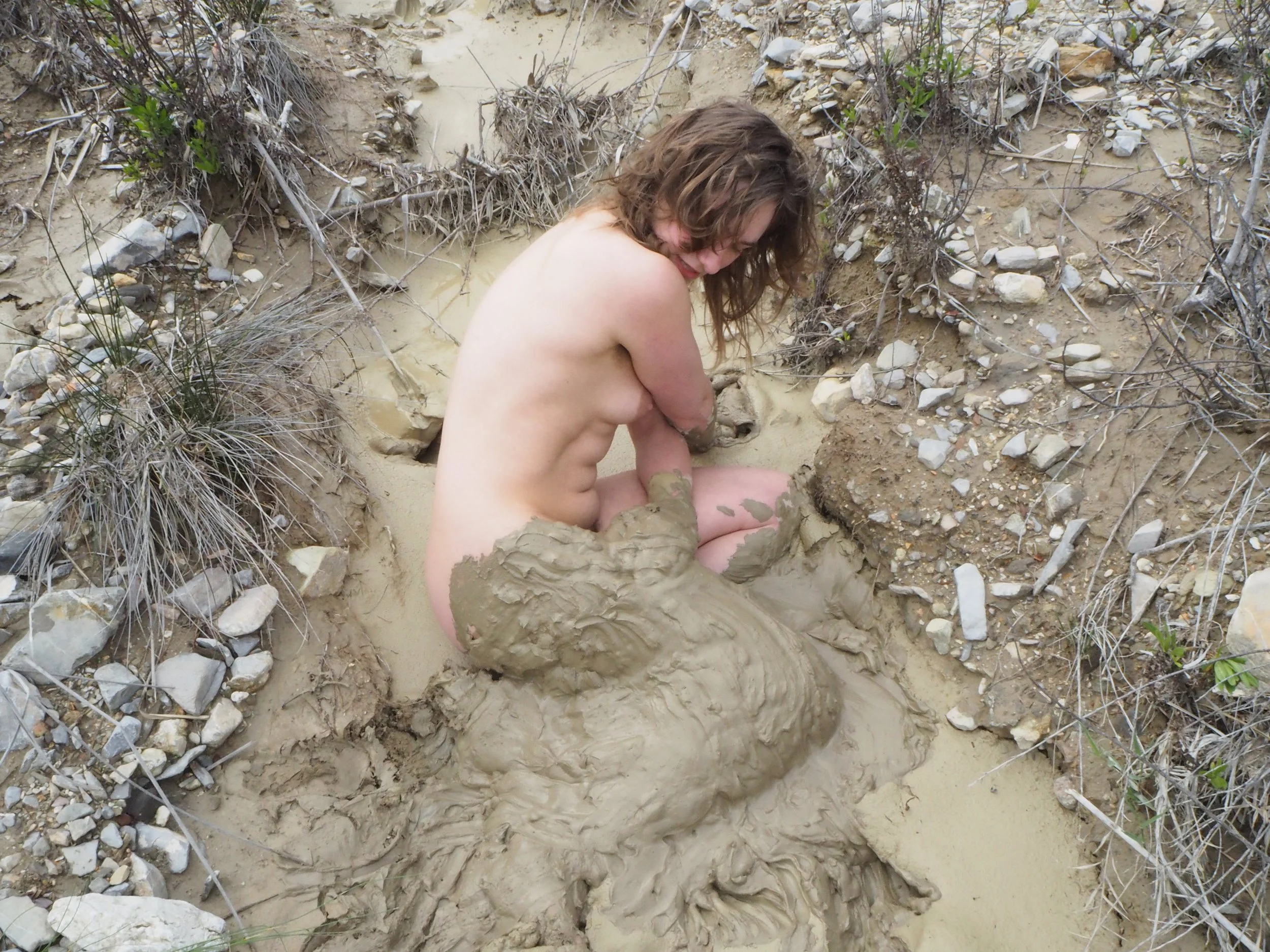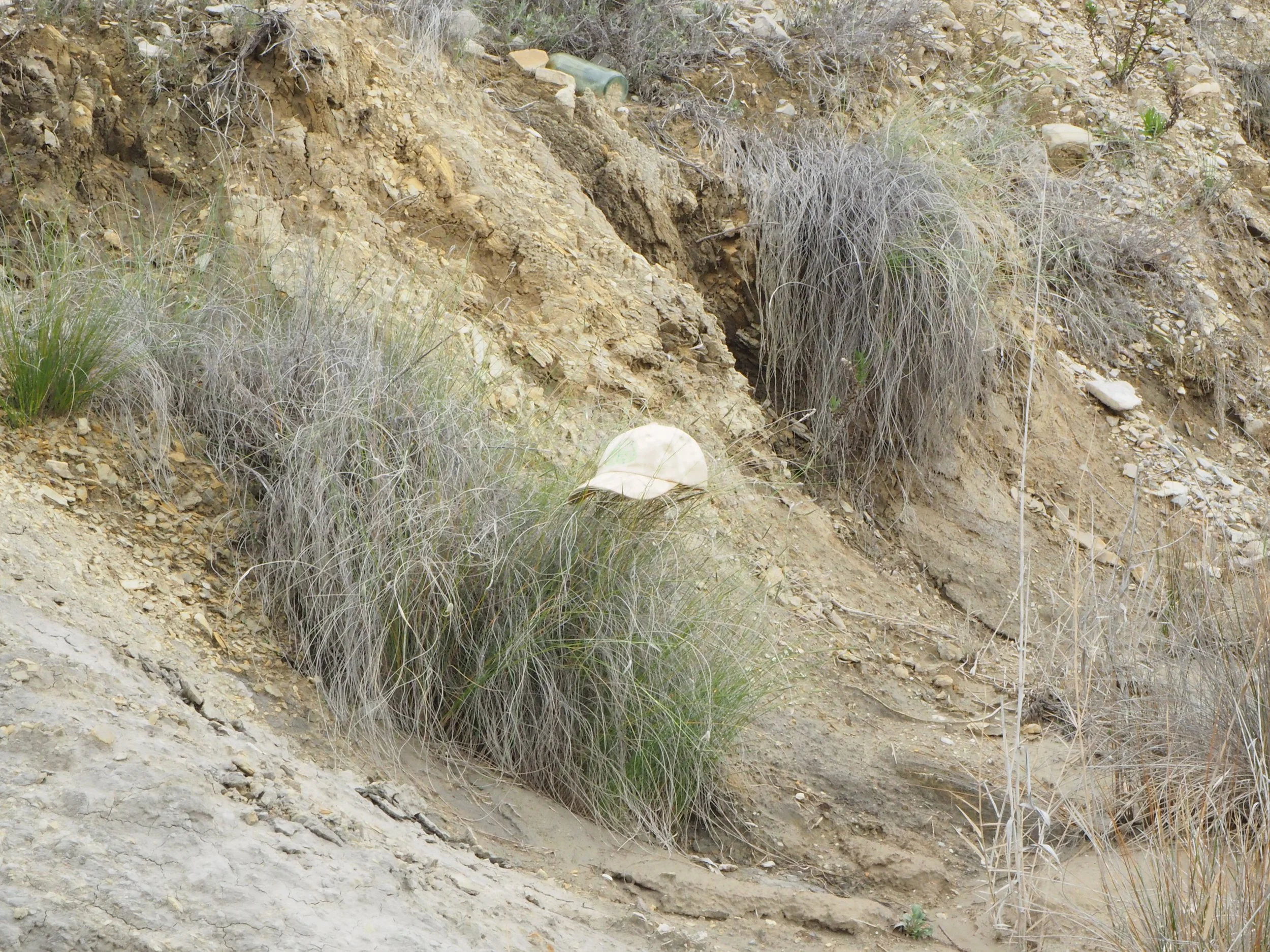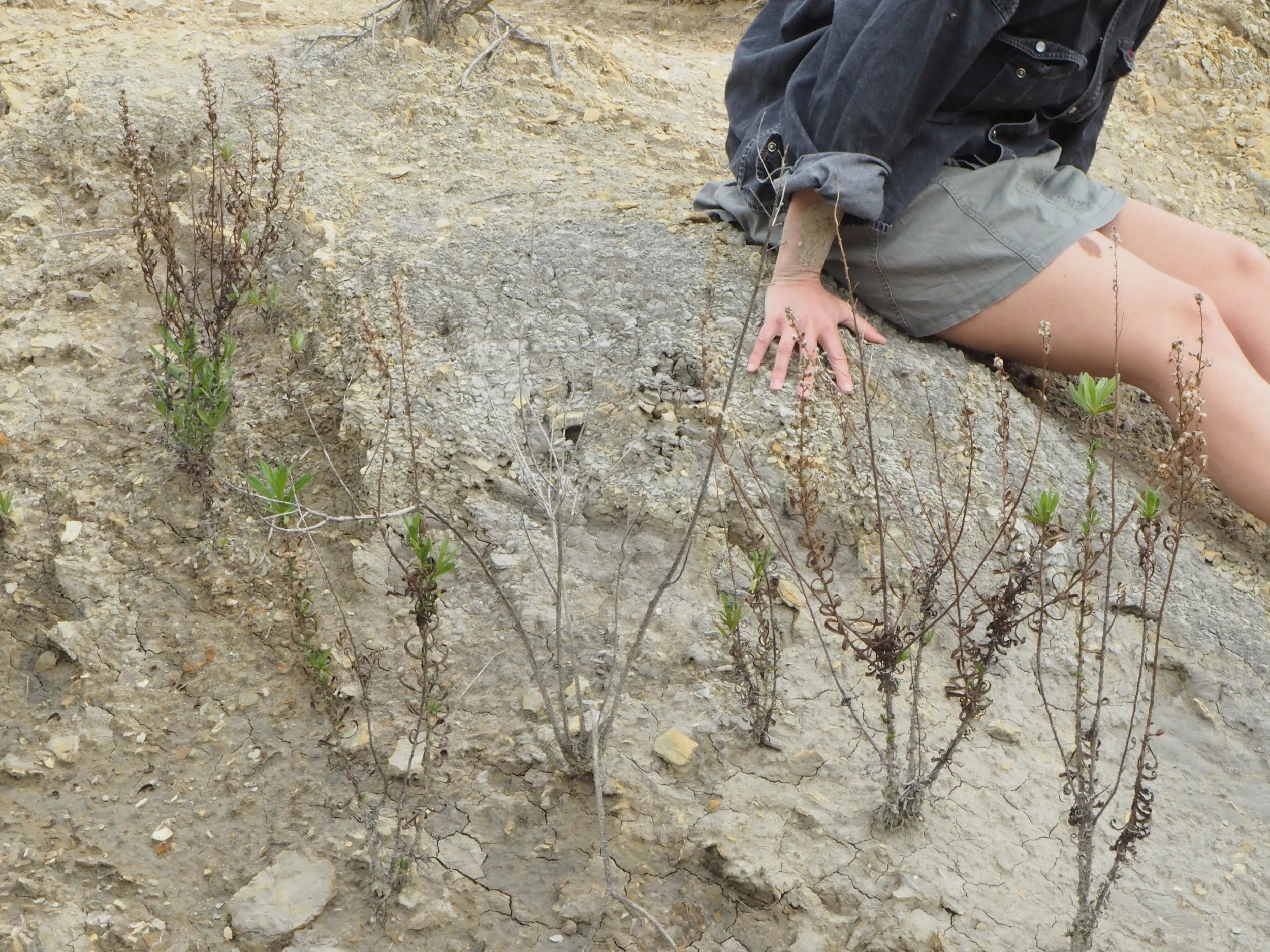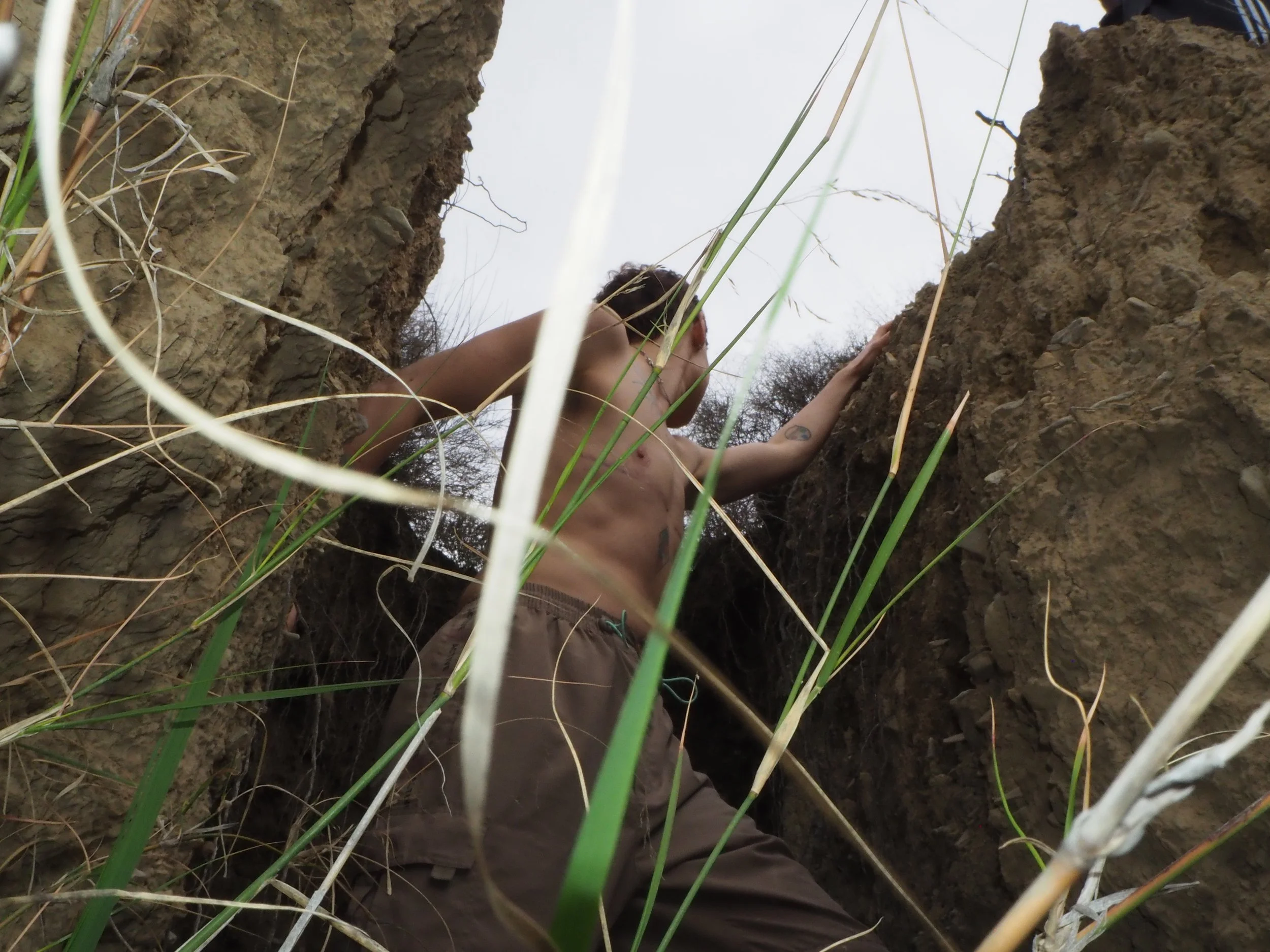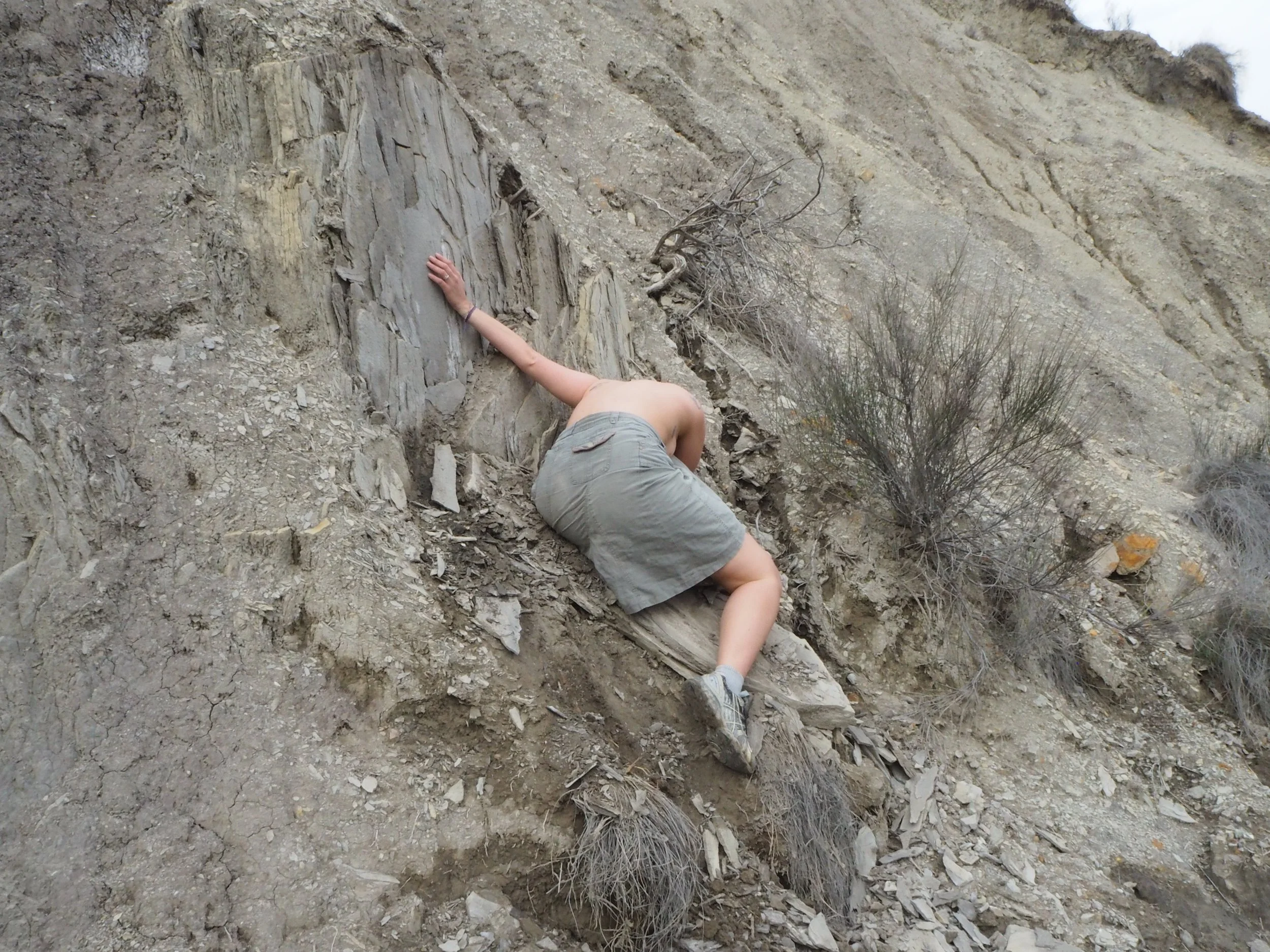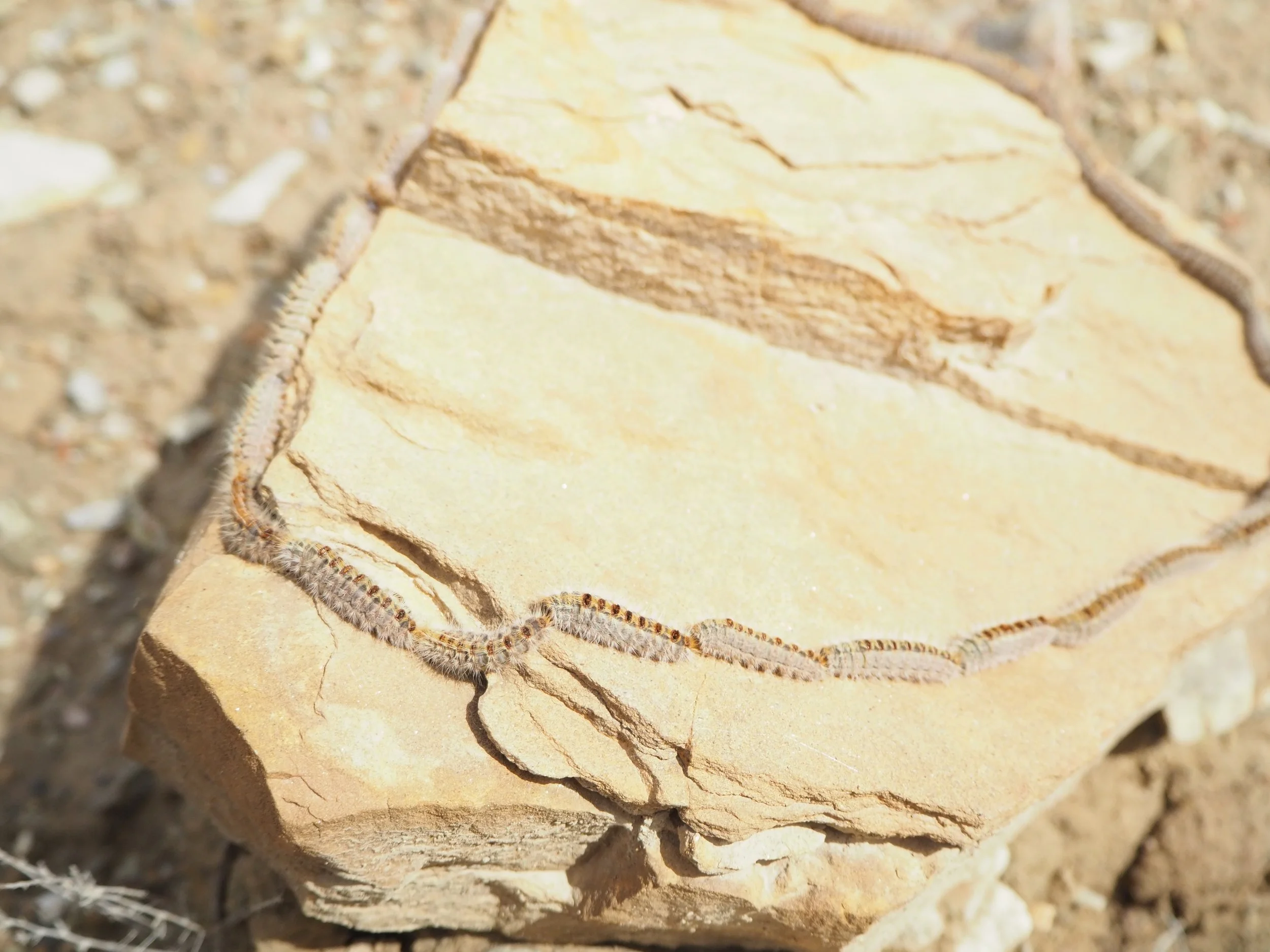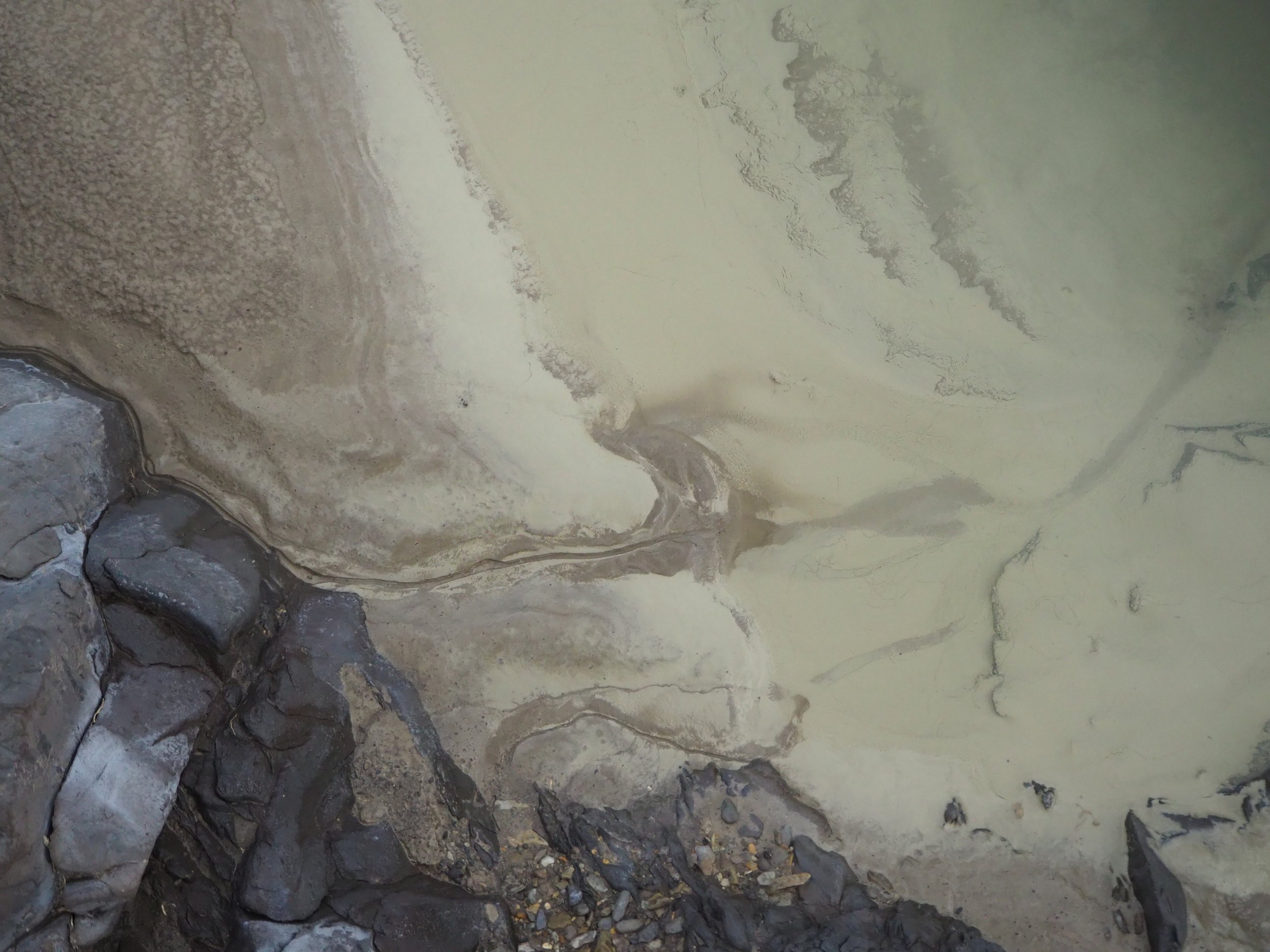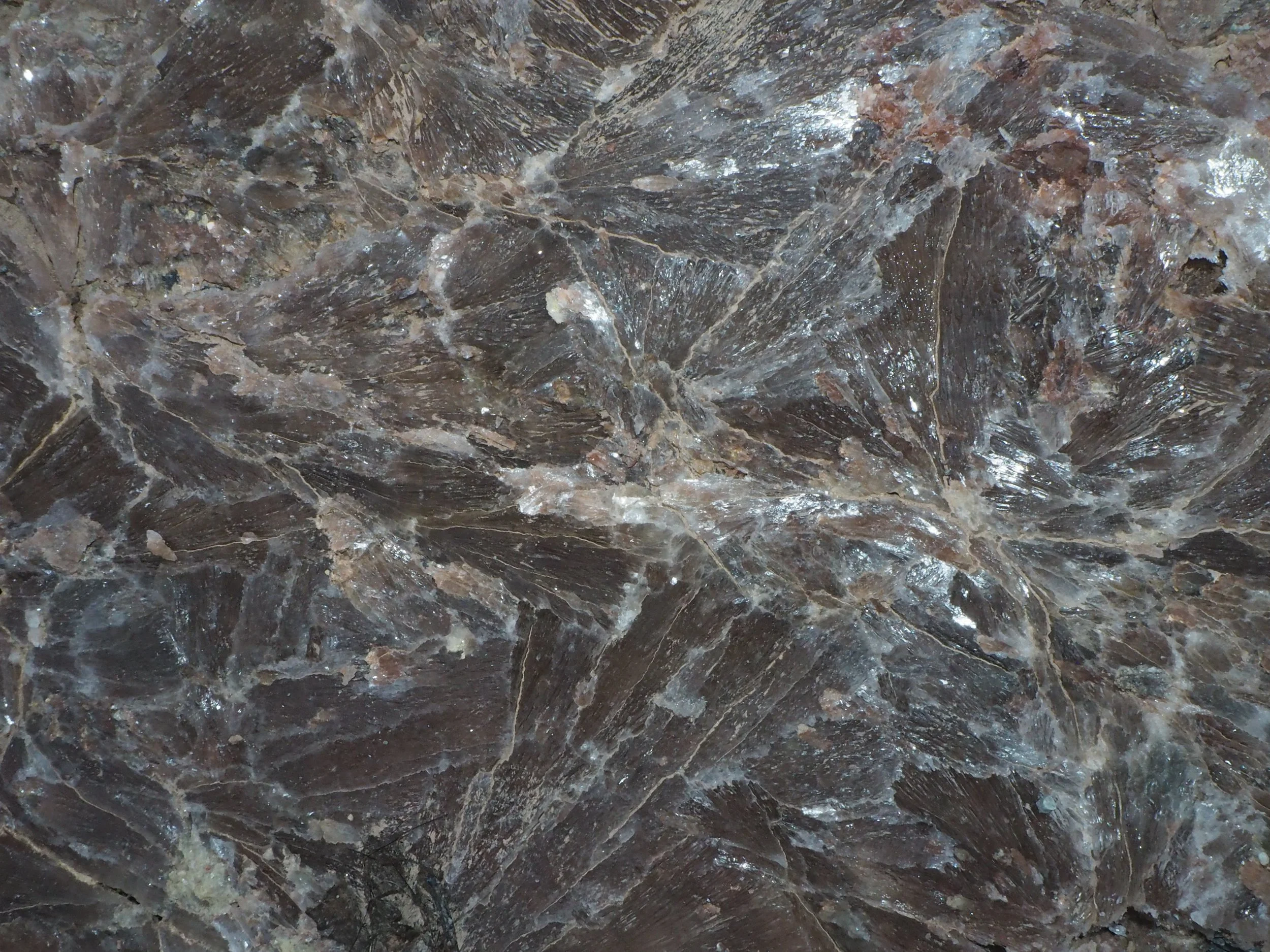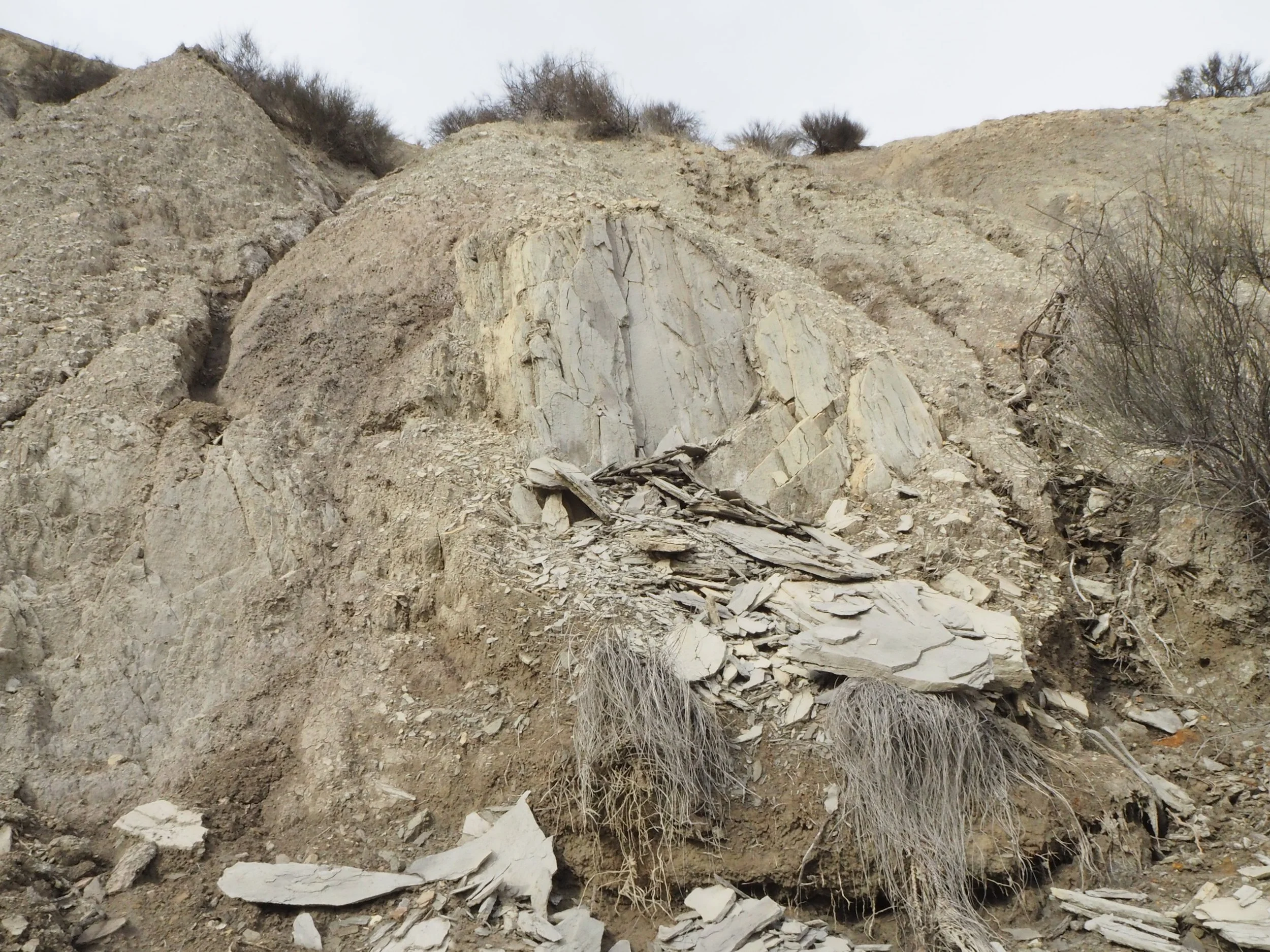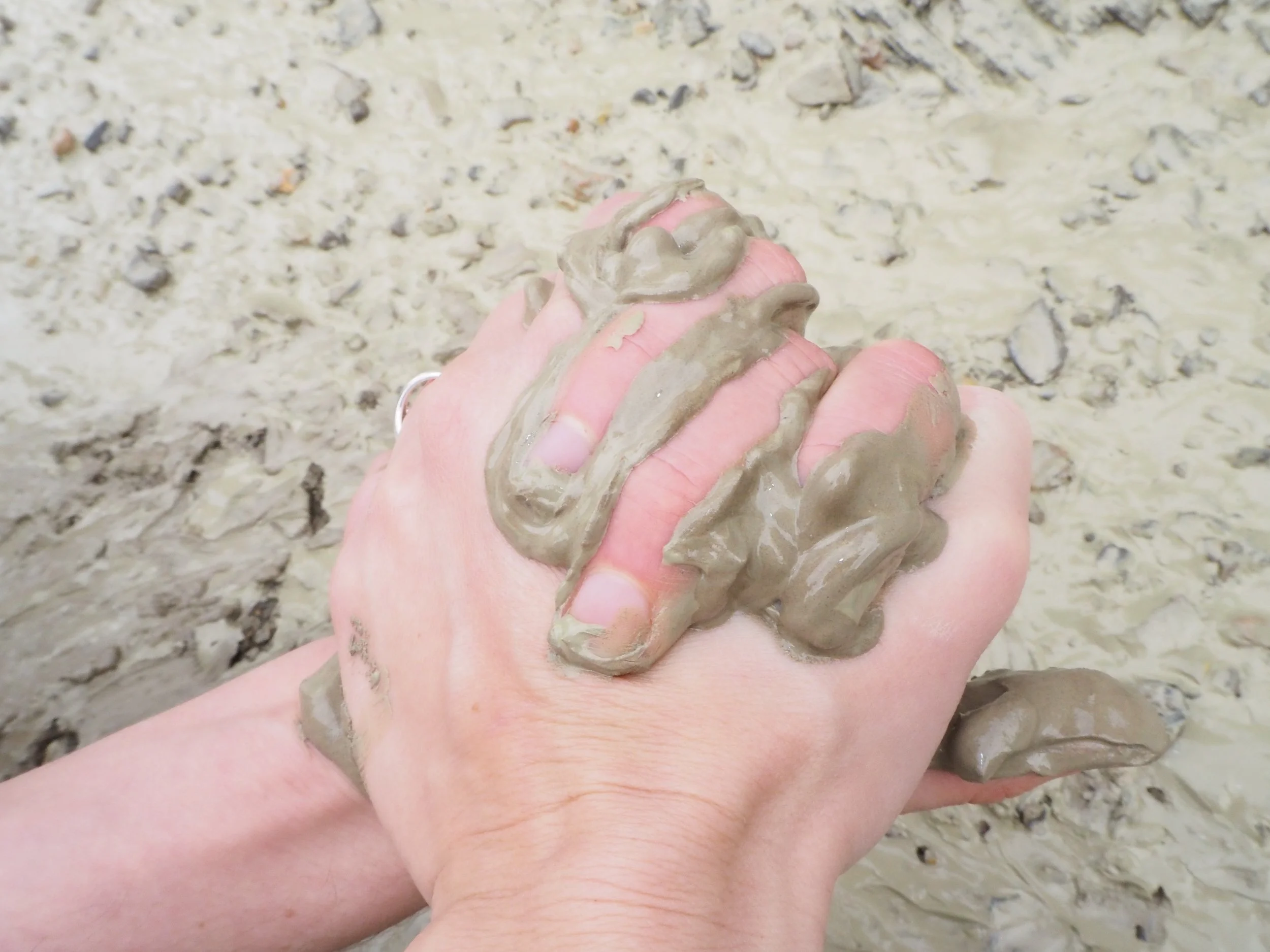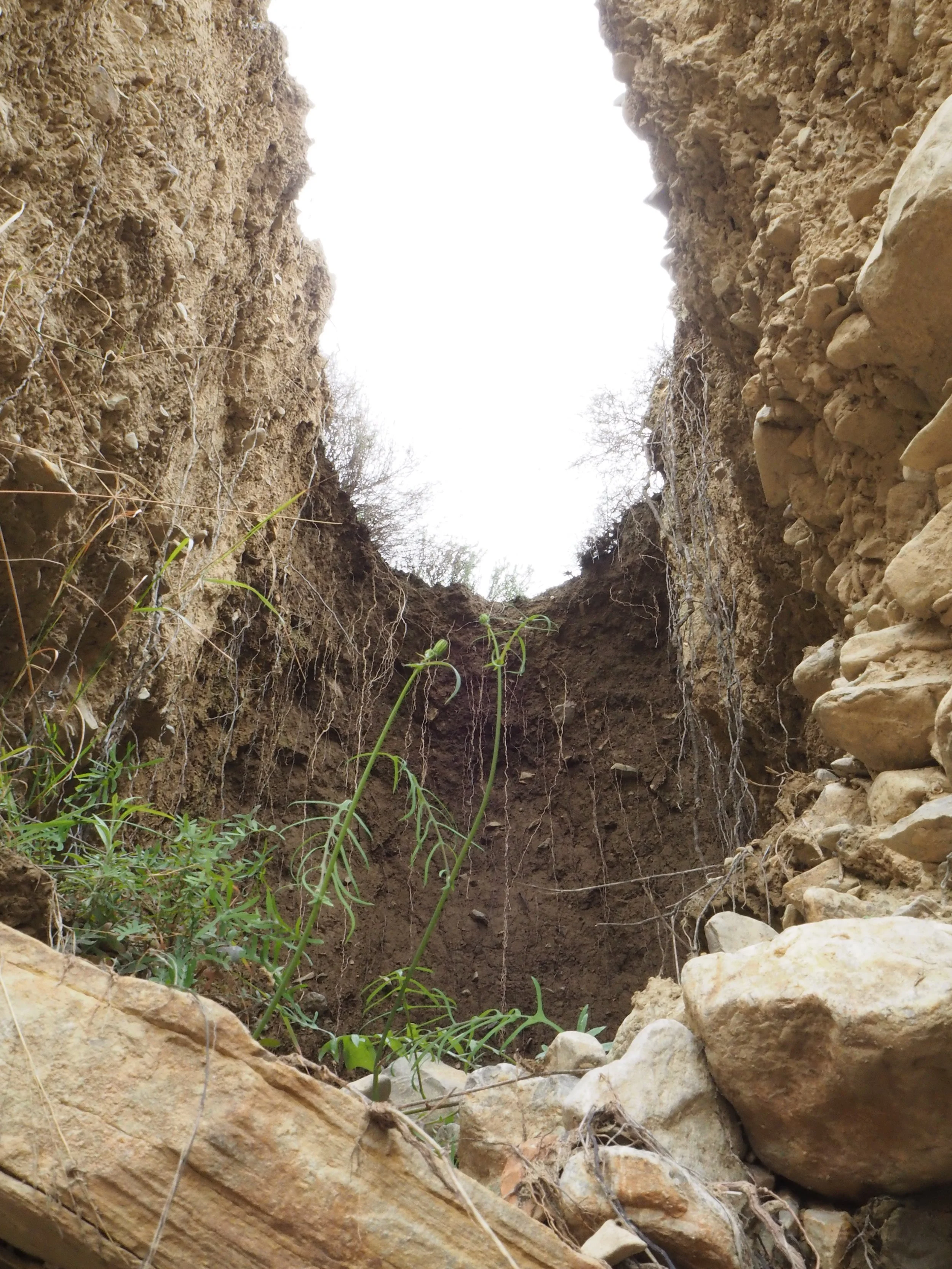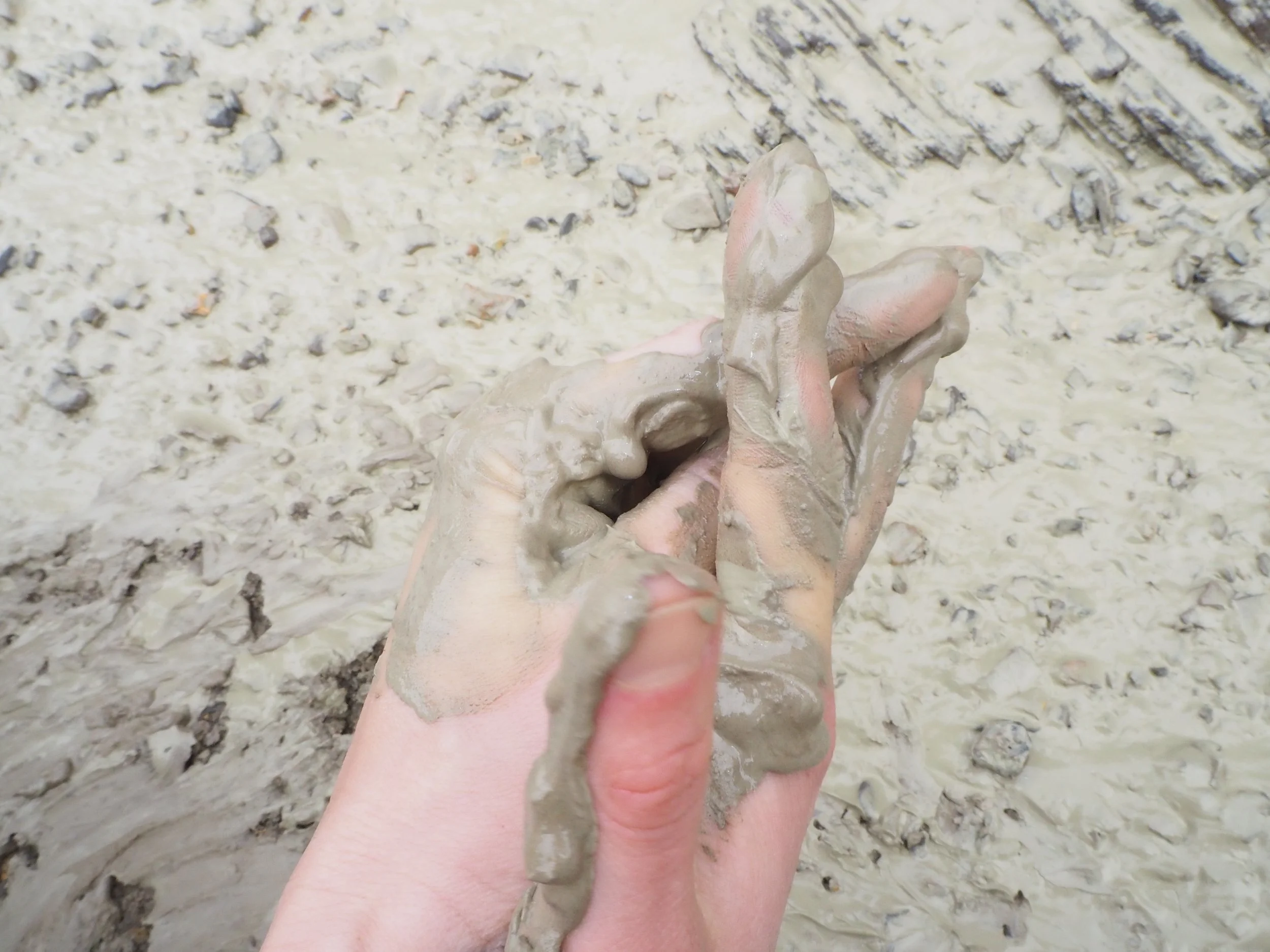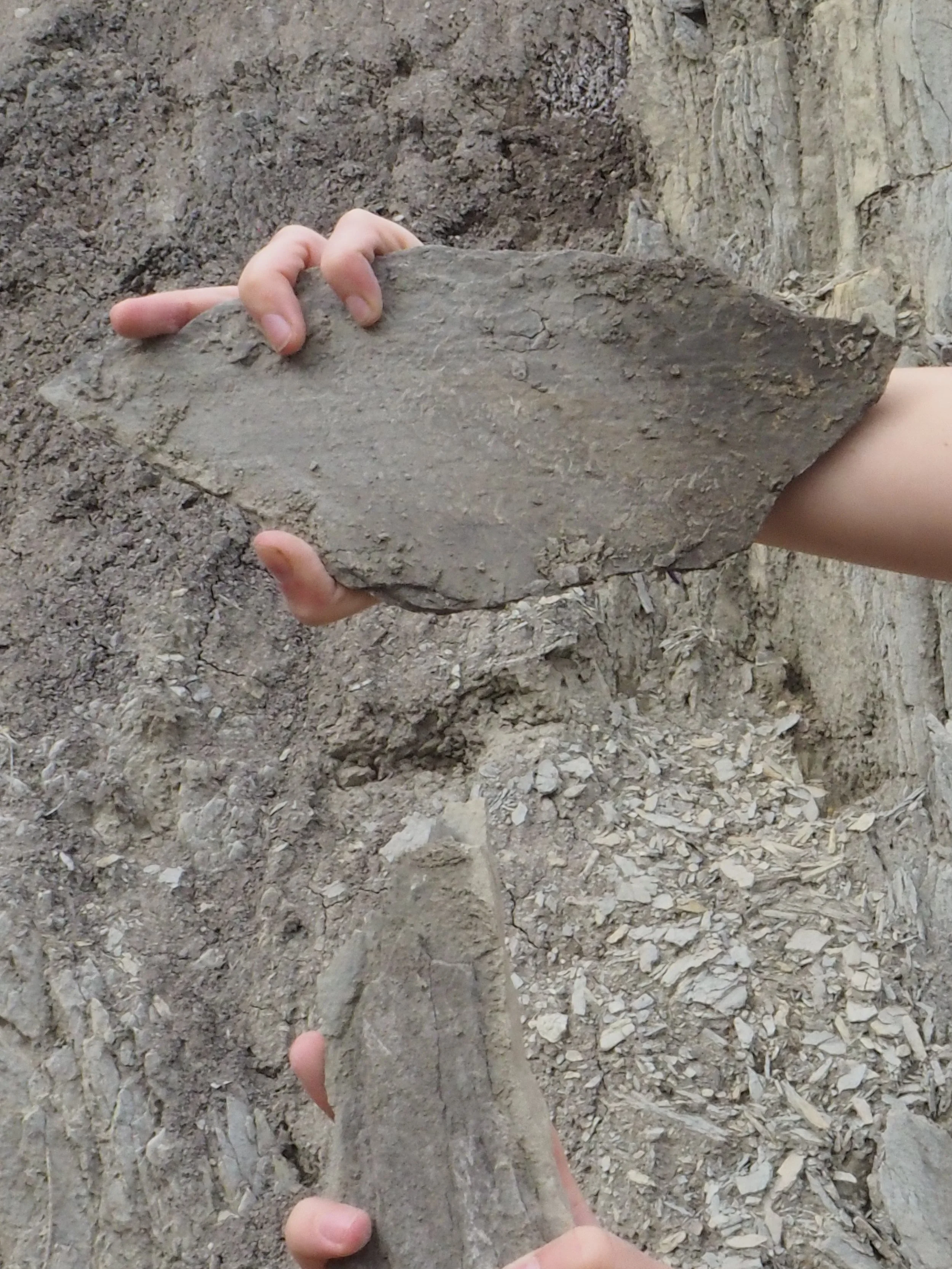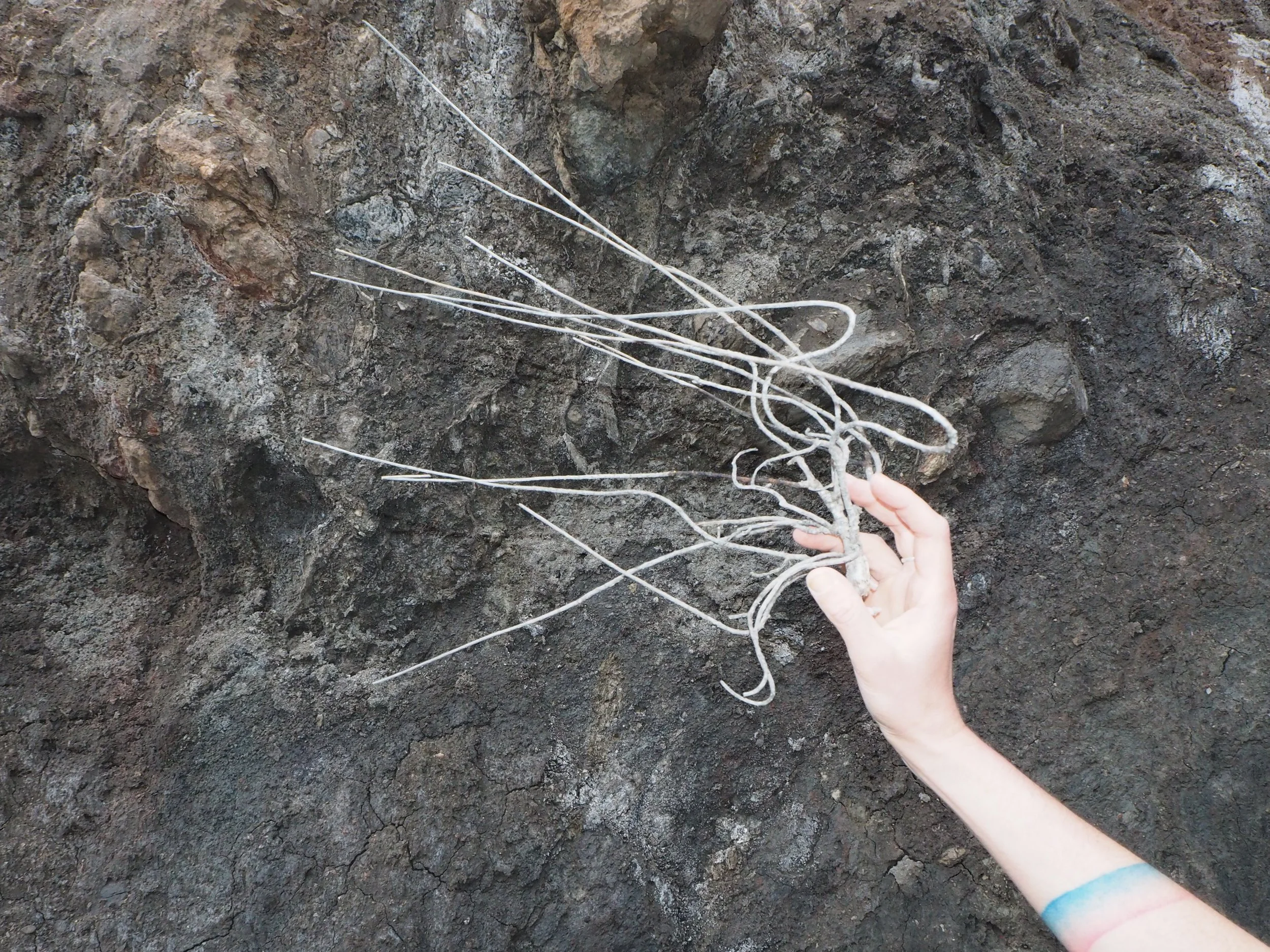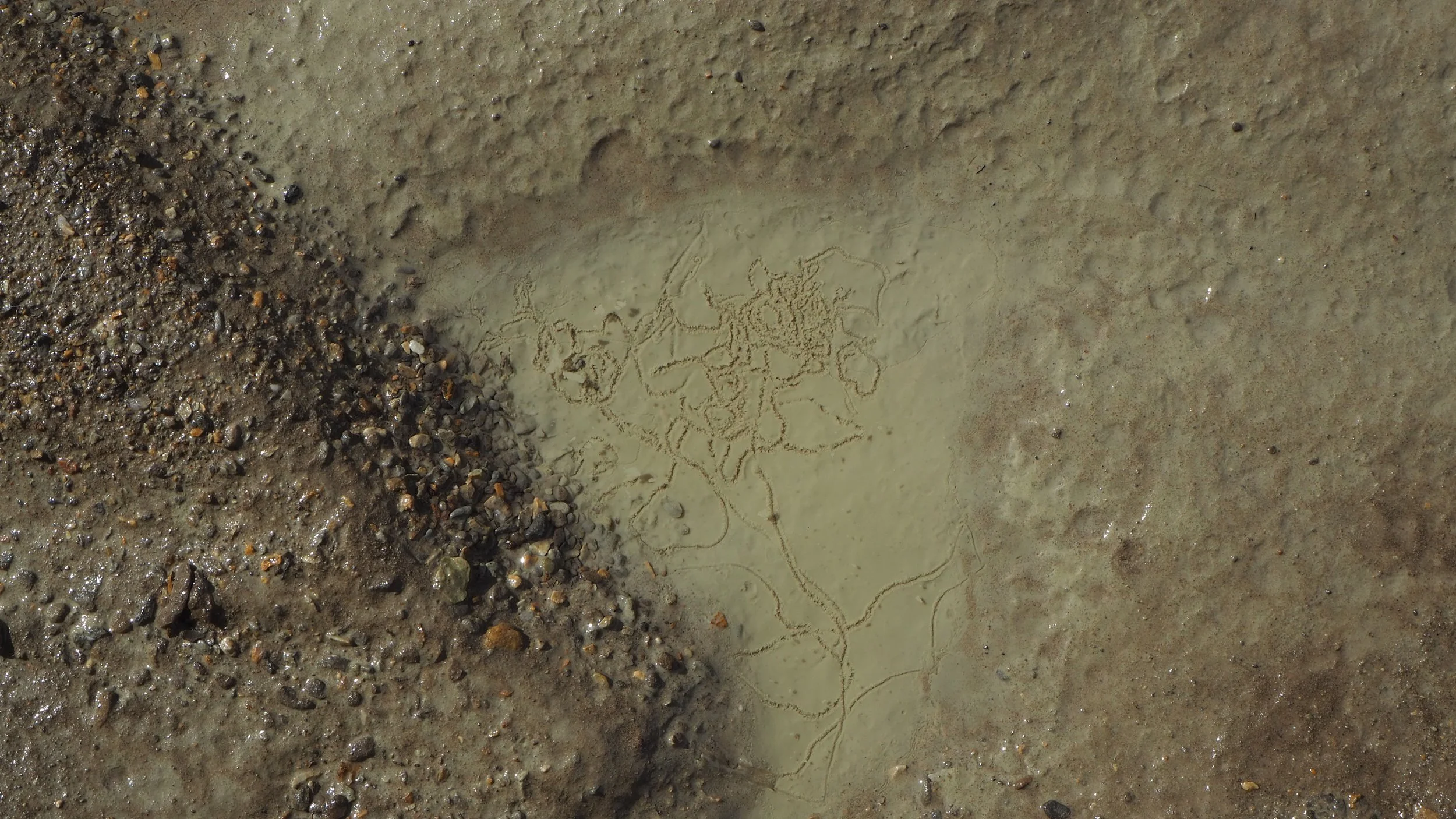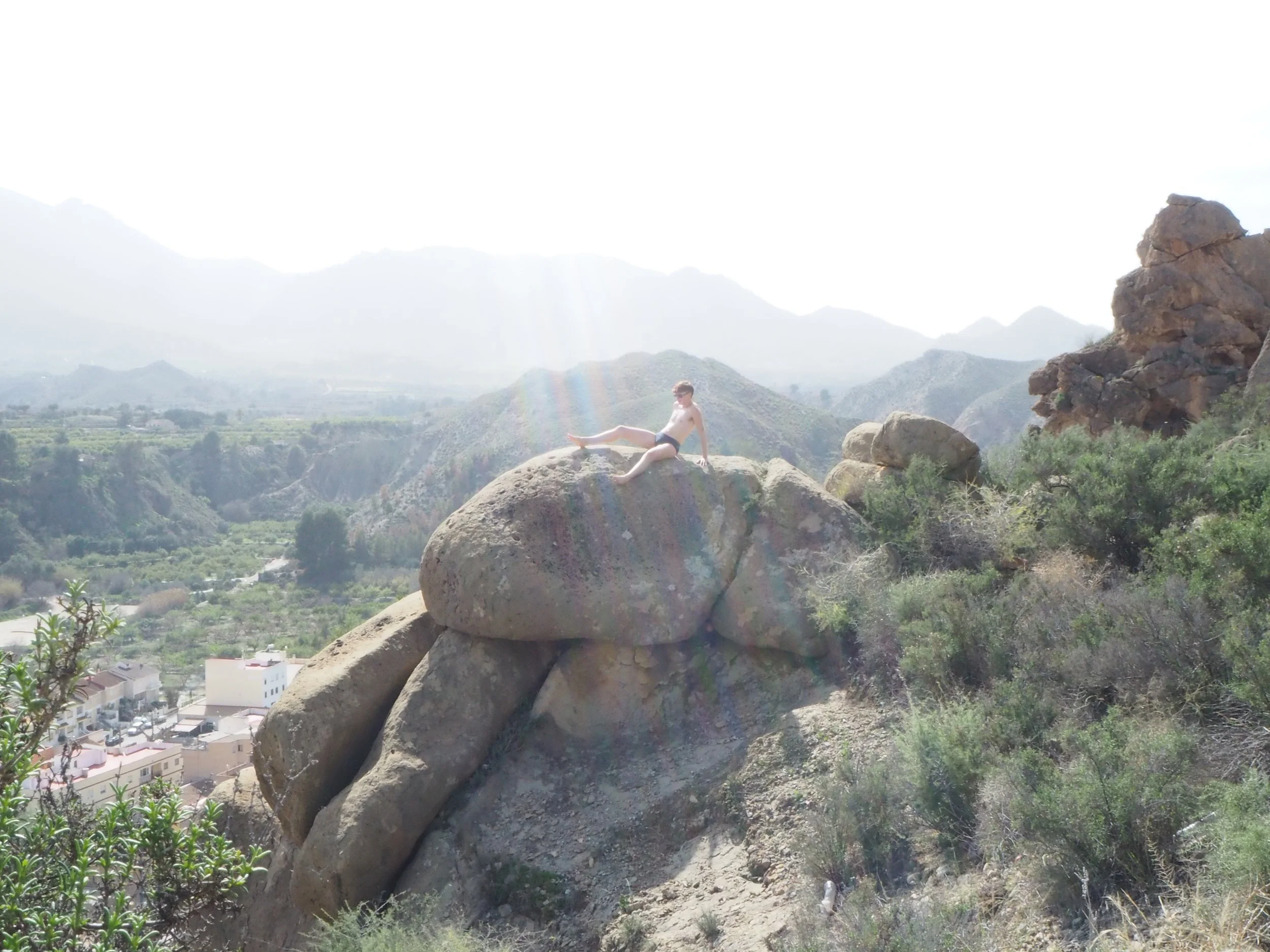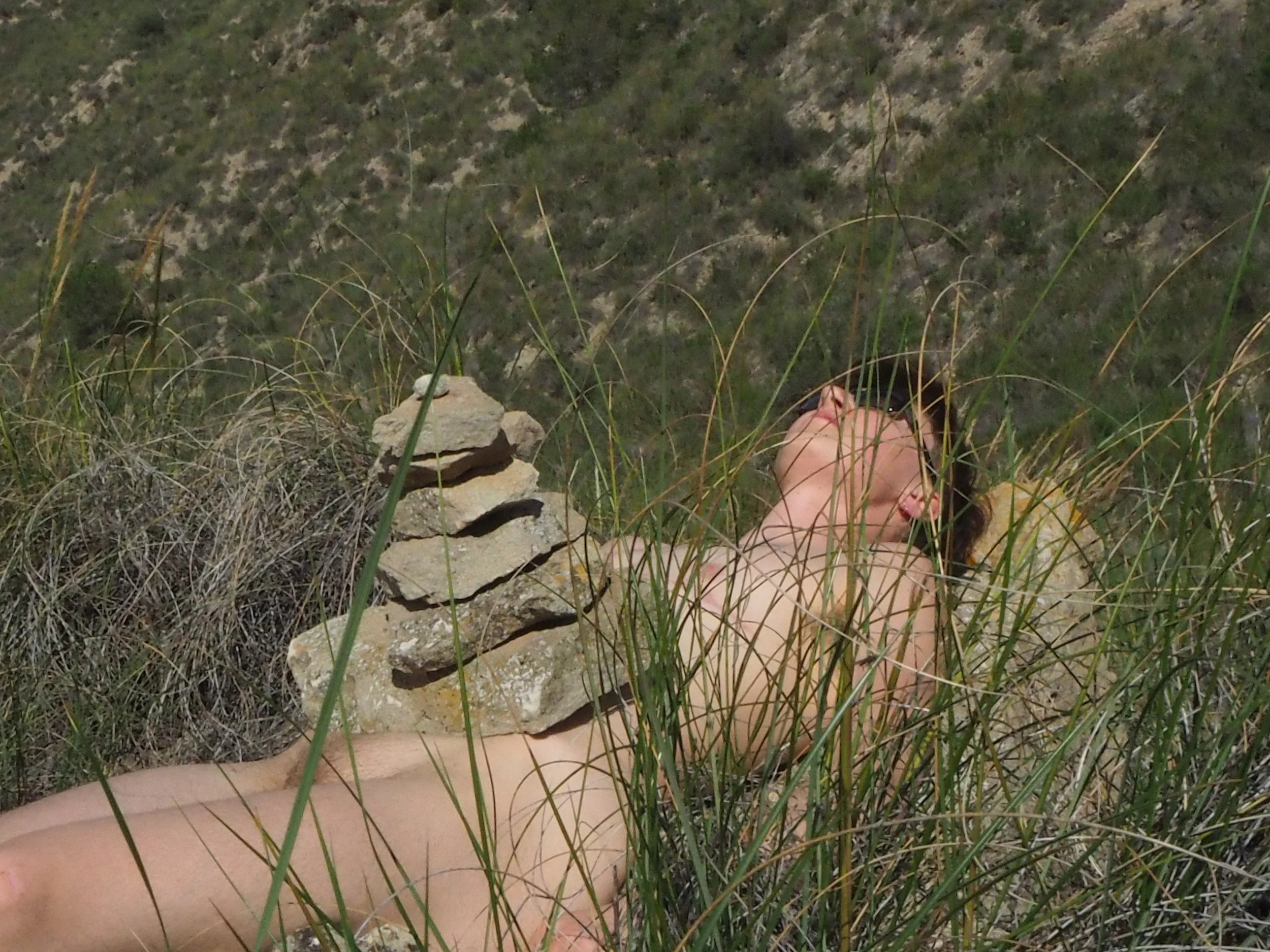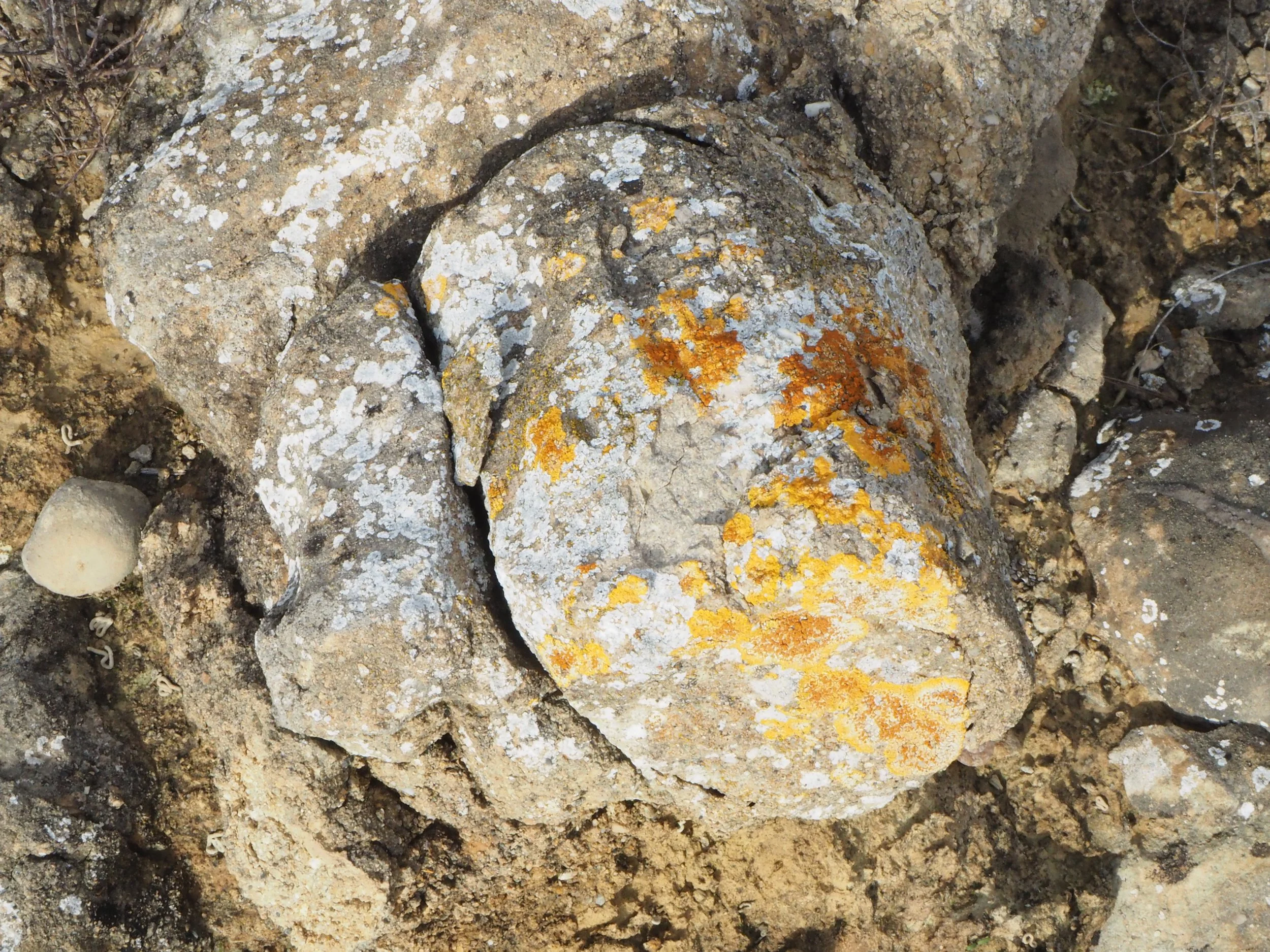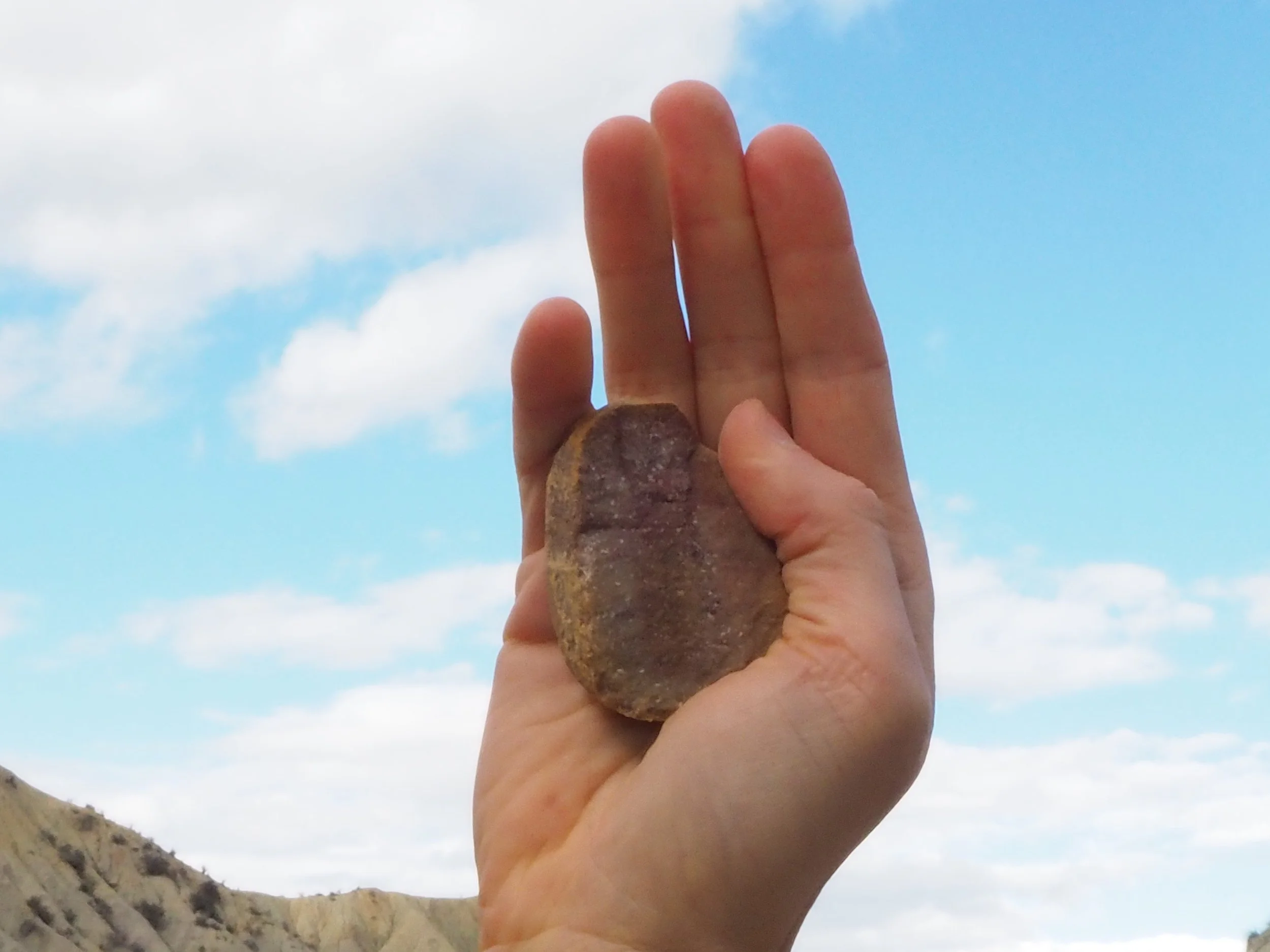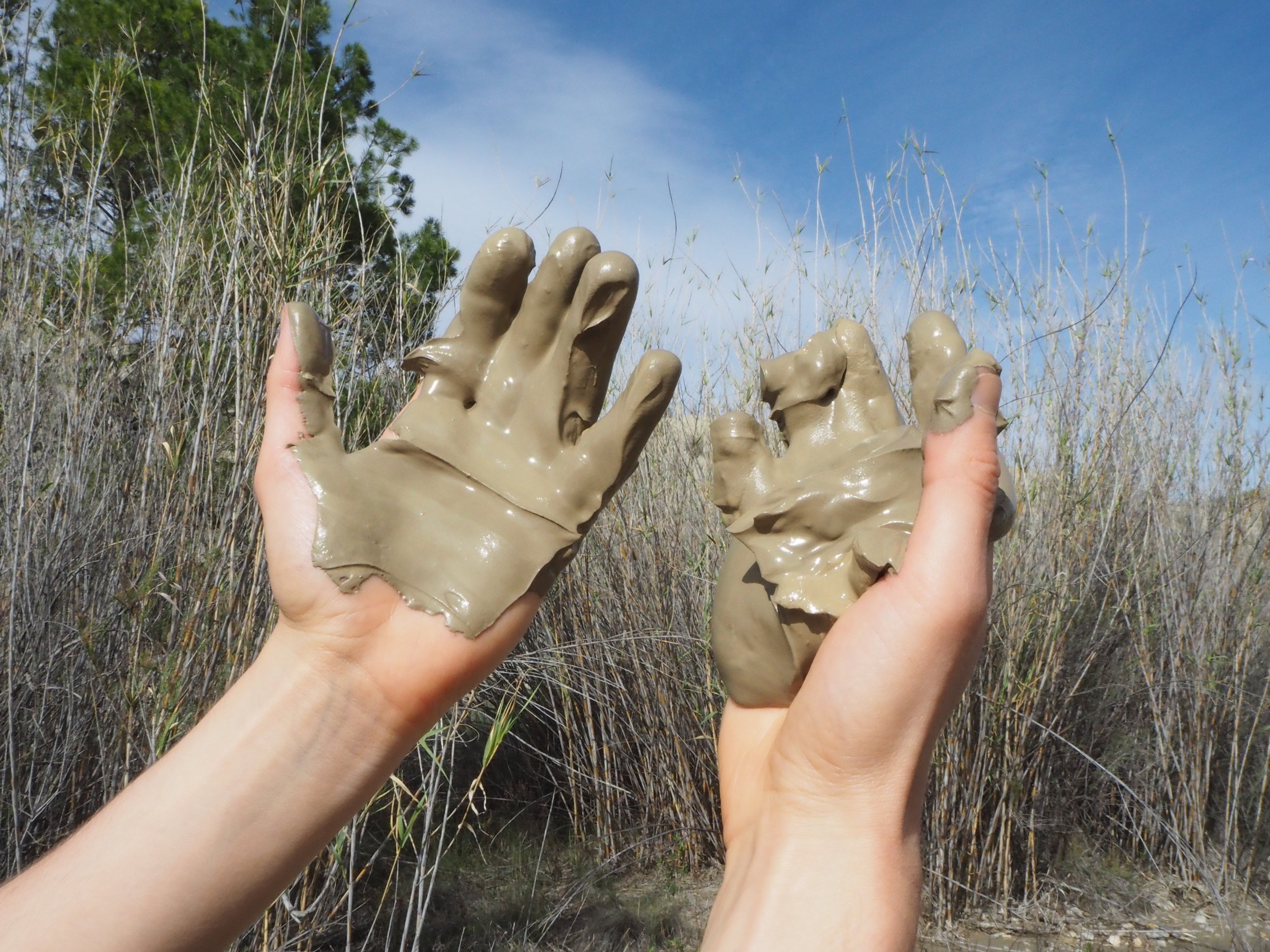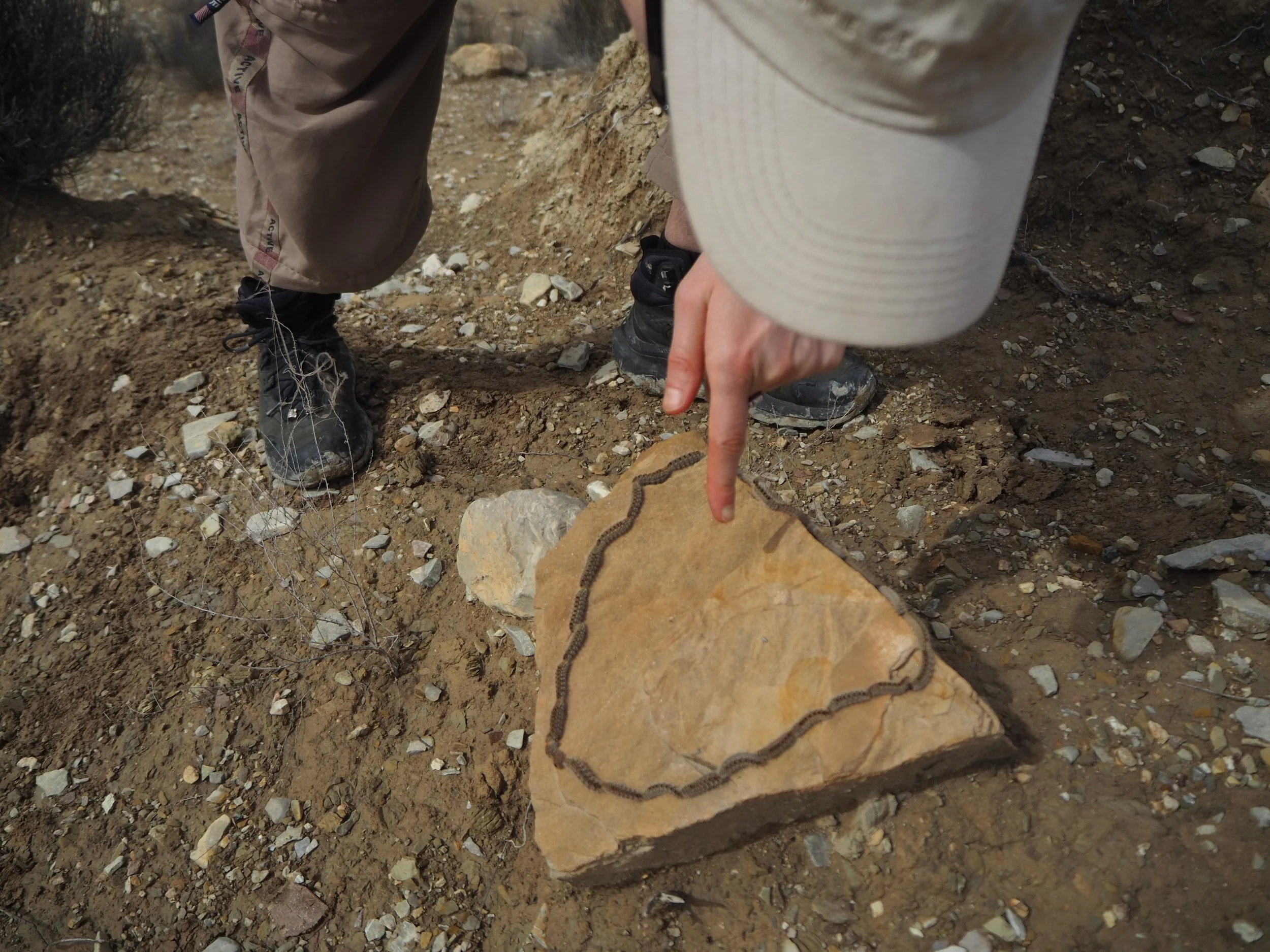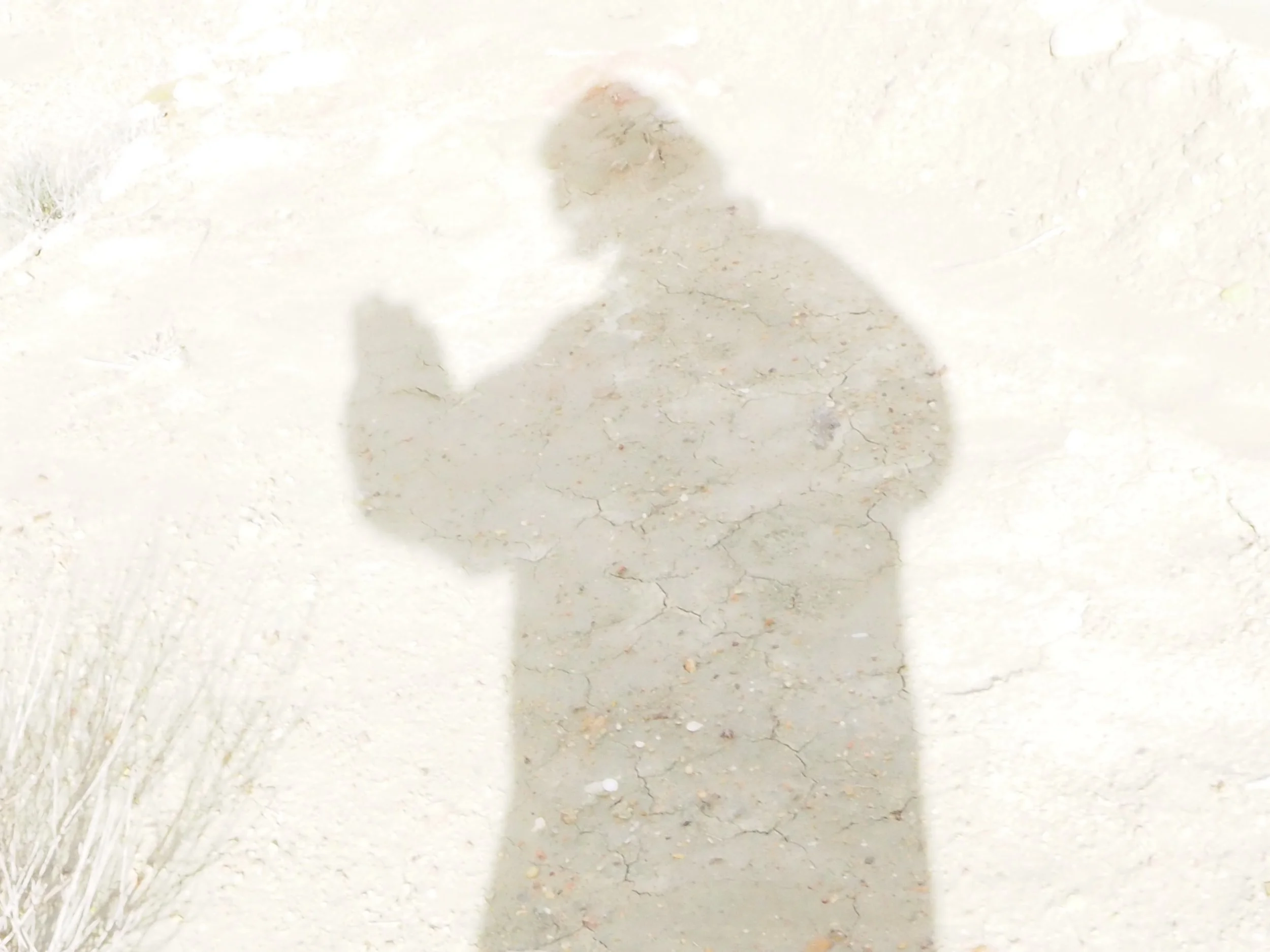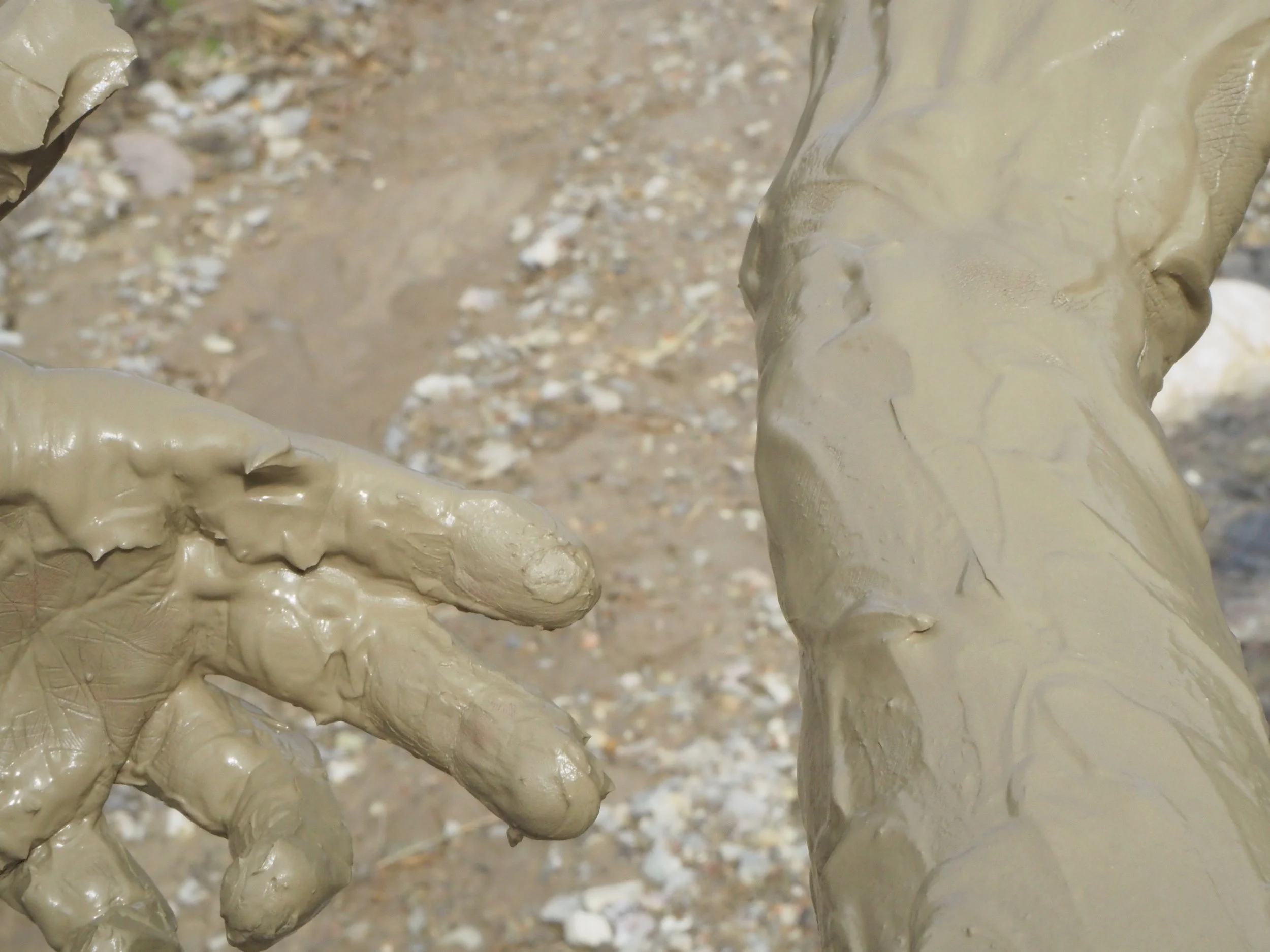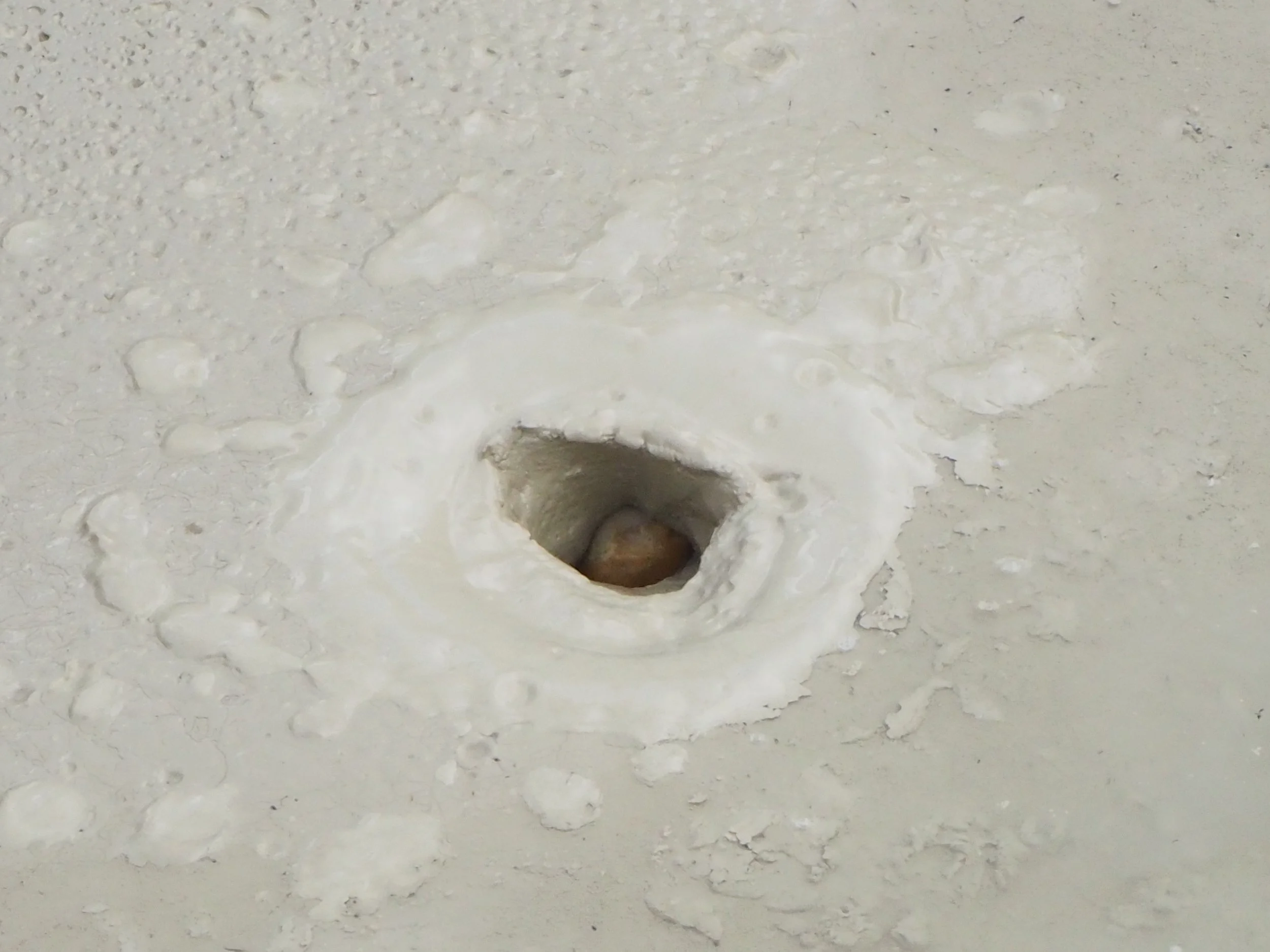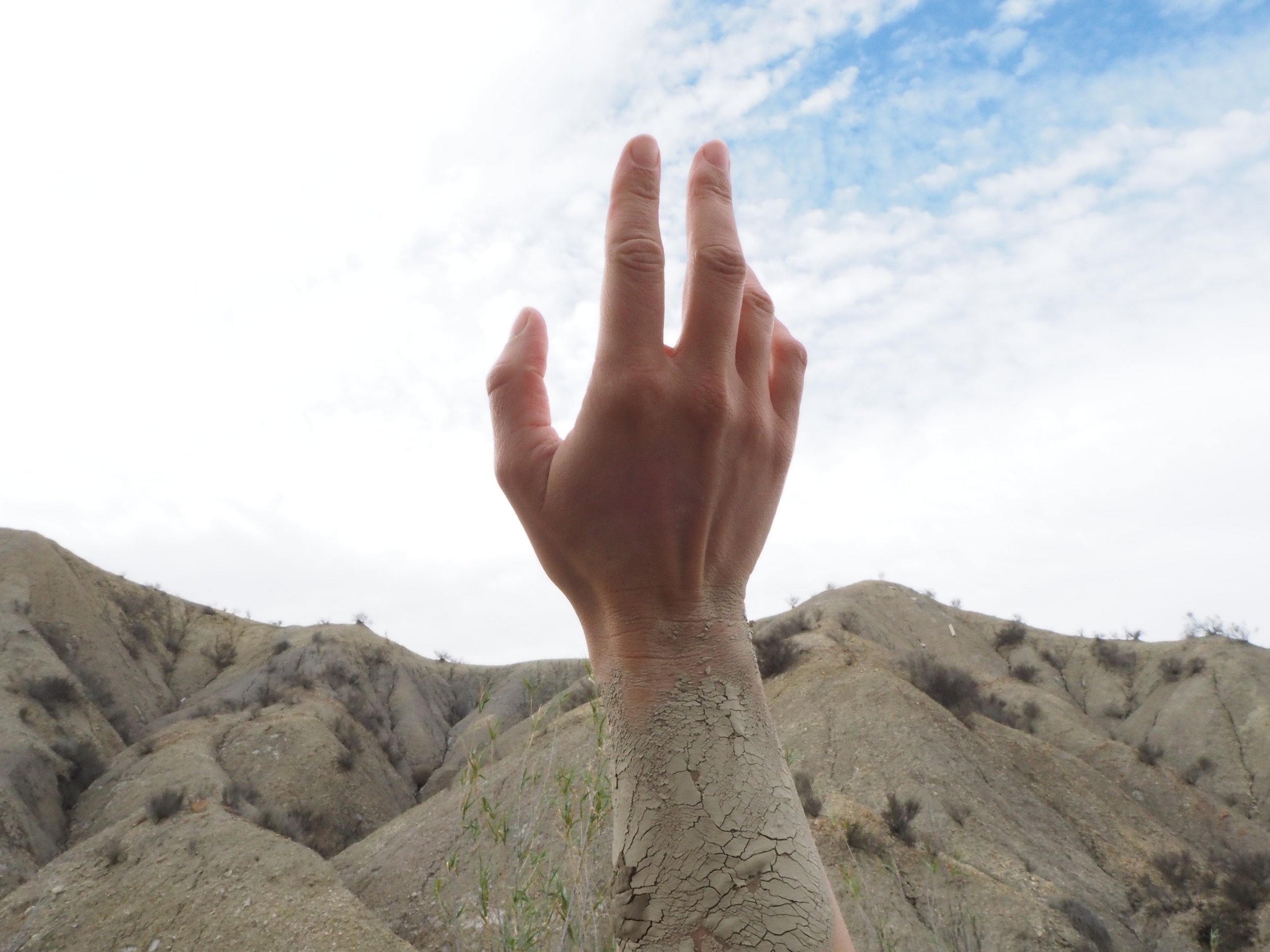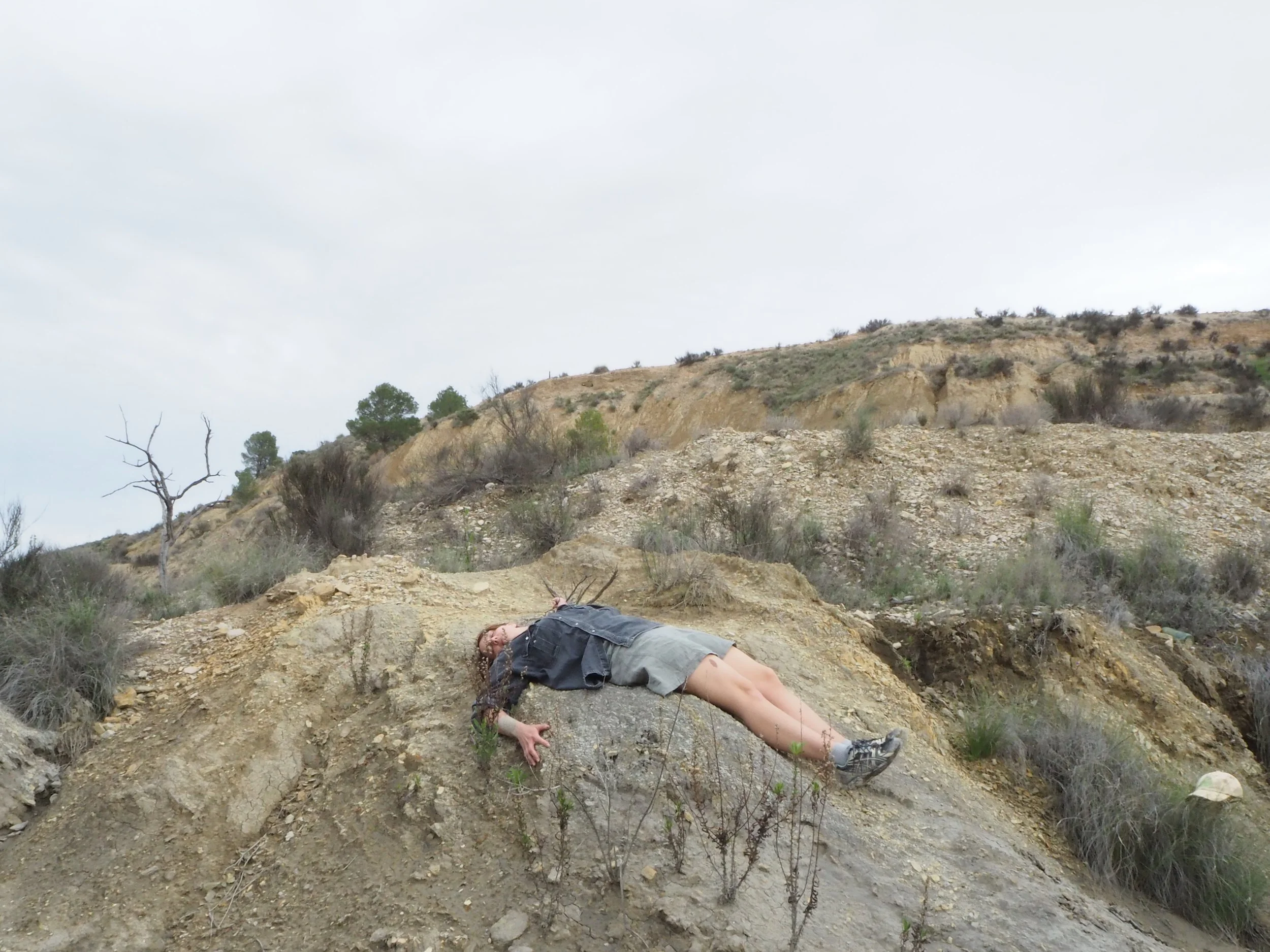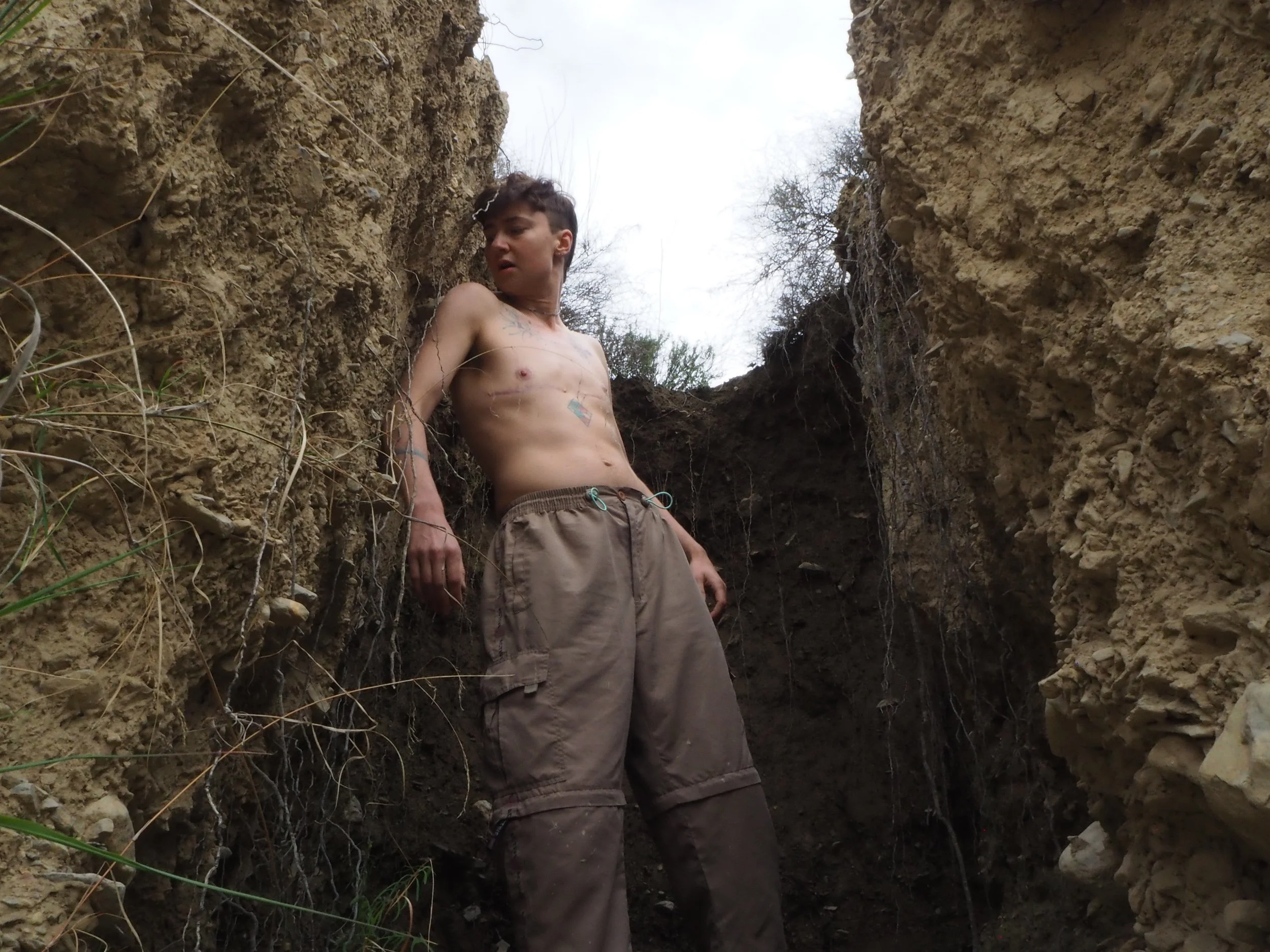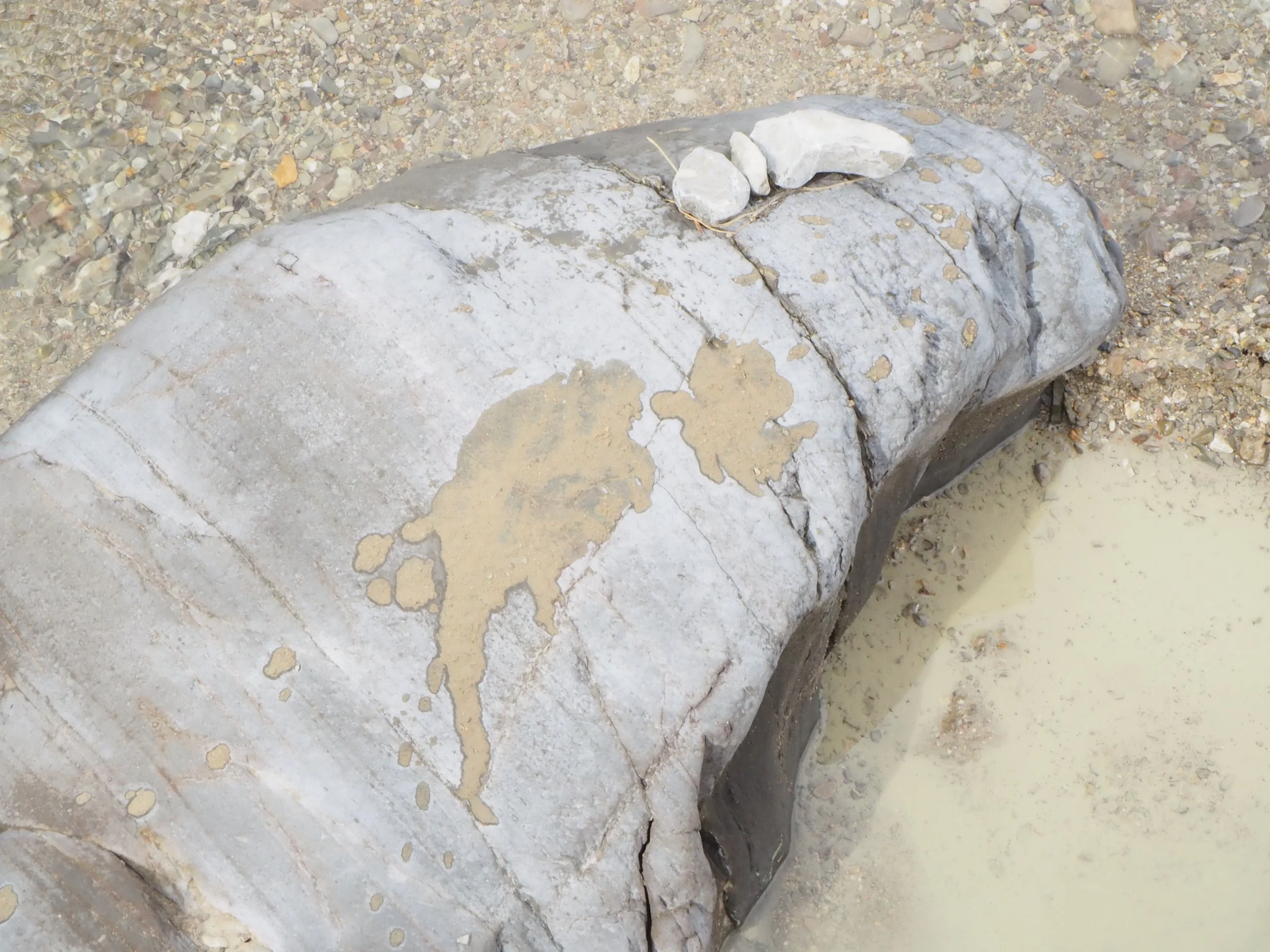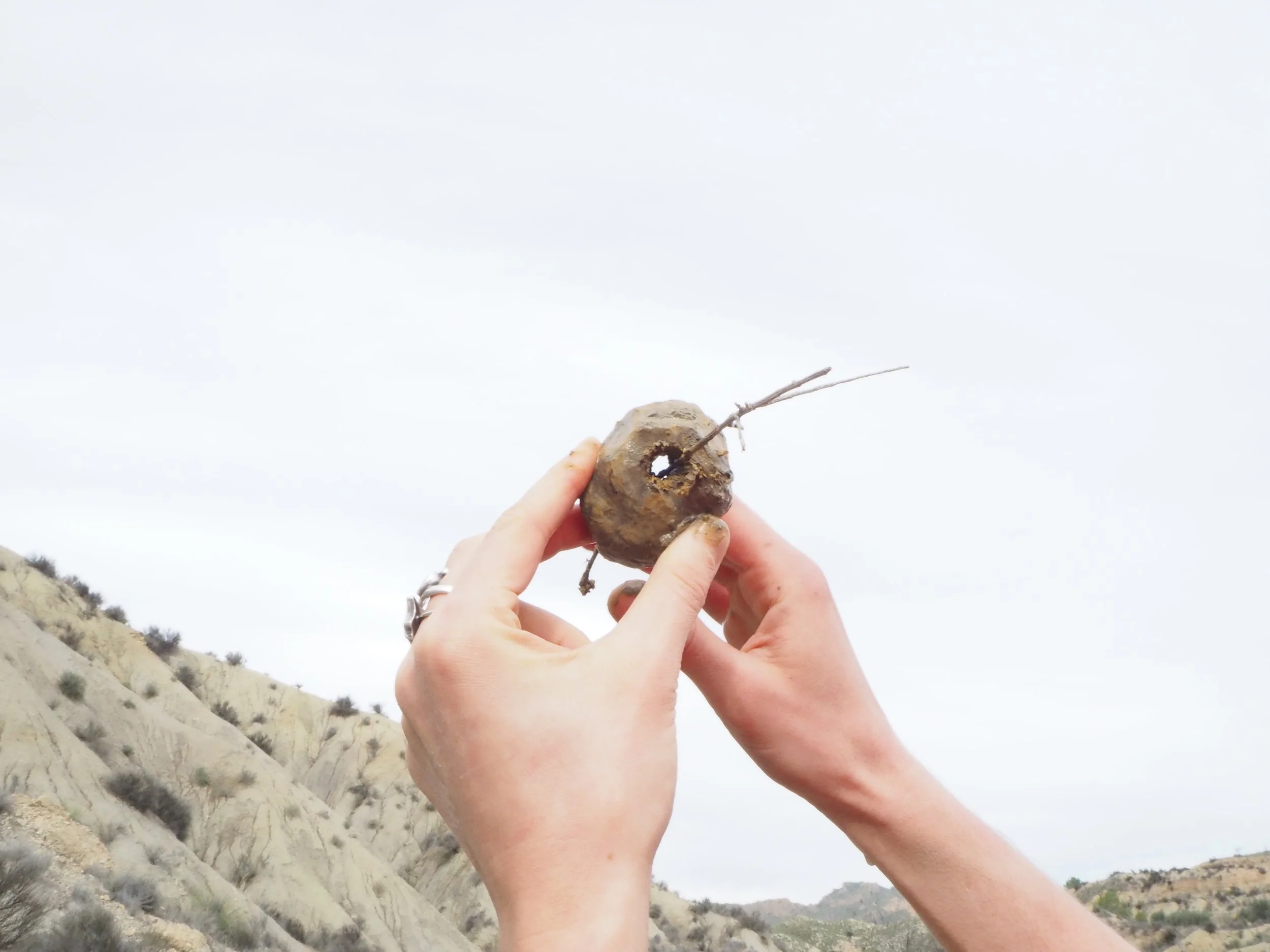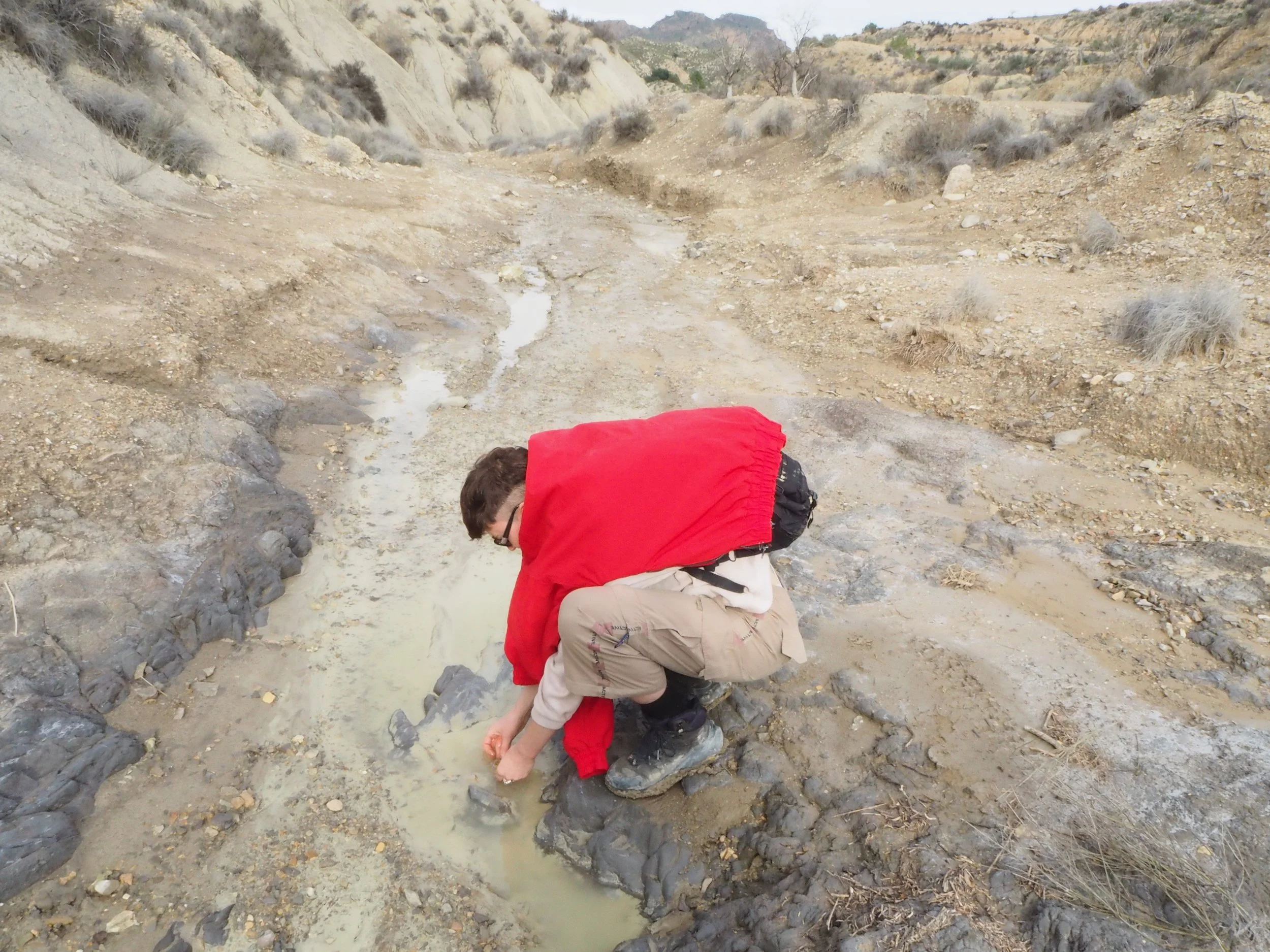
Playing-with: Research on Queer Ecology
Research Residency (2025)
How might we relate with the world beyond humans? In a time of climate emergency, we cultivate our entanglement with ecosystems, relearning our own “naturalness” as humans, and as queers. But logic and information are not enough for us to comprehend that we are natural; embodied knowledge is a missing link in understanding that earth is our home – that we come not into the world, but out of it. Through play-based research in Valle de Ricote, we integrate our experiences of queerness – a radical homecoming to self – with ecological homecoming to our planet and its family of lifeforms.
As a part of AADK’s Cruce program in Blanca, ES, we integrated theoretical research and discussion with experiments in wild spaces, integrating our queer bodies with dirt, mud, and stone. Navigating lines between innocuous anthropomorphisation and our own bewilderment, we speculate on how ‘queering’ may be a tool that translates from identity politics into ecomotivator. We developed a methodology, evolving our practice of ‘tuning’ – feeling-with the ‘other’ – to ‘playing-with,’ a curious, interactive, trans-species mode of relating.
As our research around more-than-human narratives expands, we aim to translate our process to other wild and rural spaces, puzzling together the unique entanglements of identity, locality, and intersectional environmentalism.
Our sessions in Valle de Ricote’s Salinas area and surrounding mountainsides sprouted new ways of thinking and working, which we transduced through a number of mediums:
Playing-with: A Glossary for Queer Ecologies
View and download the glossary PDF. Share it with friends.
Installation
Showcase of work at Centro Negra, March 2025. The installation included foraged artifacts, copies of the glossary, shape poems “Thinking-with Lichen,” and a screening of the short film “The Stone is at The Center.”
Photography
Documentation of artistic reseach in Valle de Ricote and the surrounding mountains. Much of the embodied practice was in interaction with local geological phenomena, playing with interscalar perception, somaesthetics, and post-gender expression.
Credits:
Research, photography, field recording, film, and glossary by Lou Croff Blake & Madelyn Byrd
Featuring Julie Stamm & Elena Azzedin
Special thanks to AADK’s team members Elena Azzedin, Selu Harraiz, Giuli Grippo, and to the rest of our Blanca community of artists and friends.
Funded by Goethe Institute through the Culture Moves Europe: Mobility Grant
